#drone-with-good camera drone-with-longest-flight-time
Explore tagged Tumblr posts
Text
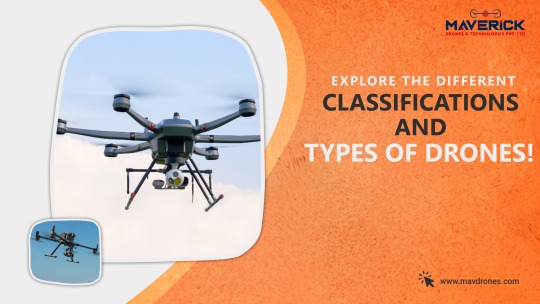
Explore The Different Classifications And Types Of Drones!
Drones, once a niche technology for hobbyists or military use, have evolved into a vast and diverse field, with various classifications and types suited to different purposes. Whether you’re thinking about buying one or just want to understand what they’re all about, it’s helpful to get a sense of how drones are categorized.
To make things more understandable, let's dissect it.
Drone Classifications: How are they categorized?
Another name for drones is unmanned aerial vehicles, or UAVs. They can be divided into groups based on several factors. These factors include their size, weight, range, usage, and level of autonomy. Below is a summary of the most popular classifications:
1. Size-Based Classifications
Drones come in all shapes and sizes, and this is one of the primary ways they’re classified:
Nano Drones: These are the smallest drones available, usually under 250 grams. They are so small that they can fit in your hand's palm. Nano drones are typically used for indoor flying, recreational purposes, or even short-range aerial photography. Due to their small size, they usually don’t have long battery life, but they’re a fun introduction to the drone world!
Micro Drones: Slightly larger than nano drones, micro drones typically weigh between 250 grams and 2 kilograms. They’re often more stable, come with cameras, and are ideal for learning how to fly a drone. Most toy drones fall into this category.
Small Drones: These weigh between 2 and 25 kilograms. They’re versatile and used for both recreational and professional purposes. Small drones can carry more sophisticated cameras and sensors. This makes them popular for photography, mapping, and light delivery services.
Medium Drones: Drones that weigh between 25 and 150 kilograms fall under this category. They’re used in more specialized tasks, including surveying land, agricultural monitoring, or even search and rescue missions.
Large Drones: These are the big guns, weighing over 150 kilograms. They’re primarily used by the military for surveillance, reconnaissance, or combat missions. Some large drones are also used for heavy-duty industrial tasks like mapping and large-scale surveying.
2. Range-Based Classifications
Drones are also classified by how far they can fly from their controller or base station:
Short-Range Drones: These typically have a range of around 5 kilometers or less. They’re used for things like recreational flying, basic photography, or small commercial tasks.
Medium-Range Drones: These drones can fly up to around 50 kilometers. They’re often used in commercial applications like pipeline monitoring, agriculture, or infrastructure inspection.
Long-Range Drones: Drones that can operate at distances beyond 50 kilometers fall into this category. These are usually military-grade or highly specialized drones used for tasks like border patrol, environmental monitoring, or search-and-rescue missions over large areas.
3. Usage-Based Classifications
Drones are incredibly versatile and can be classified based on their intended purpose:
Recreational Drones: These are the drones most people are familiar with—the ones used for fun! Recreational drones are usually small to medium-sized and easy to operate. They are great for aerial photography, videography, or a good time outdoors.
Commercial Drones: Businesses use drones for a wide variety of tasks. For example, drones are popular in agriculture (for monitoring crops and soil), construction (for surveying land or tracking progress on projects), and logistics (for package delivery). Commercial drones have advanced features like high-definition cameras, GPS, and longer flight times.
Military Drones: These drones have been around the longest, and they’re designed for combat, surveillance, or reconnaissance. Military drones include small units that soldiers can deploy in the field. And also large, long-range systems used for intelligence gathering or precision strikes.
Industrial Drones: Industrial drones are specialized machines used for heavy-duty tasks. For example, they’re often used for inspecting power lines, wind turbines, oil rigs, or other infrastructure that’s hard for humans to reach. They can carry special equipment like thermal imaging cameras or LIDAR systems.
4. Autonomy-Based Classifications
As technology evolves, drones are getting smarter, and many can now fly autonomously. This means they don’t need a human controlling them the entire time. Here’s how drones are classified based on their autonomy:
Manual Drones: These require constant input from a pilot or operator to stay airborne. They’re the most basic types, and the user has complete control over the drone’s movements.
Semi-Autonomous Drones: Semi-autonomous drones can perform some tasks on their own. Tasks such as maintaining altitude and avoiding obstacles. They also return to a home base when the battery is low. However, they still require input from an operator for most actions.
Autonomous Drones: These drones are capable of performing entire missions without any human intervention. They can follow pre-programmed routes, navigate using GPS, and even make decisions based on sensor data. Autonomous drones are used in situations where human control isn’t practical. Such situations include remote surveillance or certain industrial tasks.
Types of Drones: What are they used for?
Now that we’ve gone over classifications, let’s look at the different types of drones based on their physical design and functionality:
1. Multi-Rotor Drones
The most common type of drone is the multi-rotor drone. These are the classic drones with multiple propellers (usually four, which is why you might hear them called "quadcopters"). Multi-rotor drones are known for their stability, ease of use, and ability to hover in place. They’re ideal for aerial photography, surveillance, and short-range tasks. But they have relatively short flight times compared to other types.
2. Fixed-Wing Drones
Unlike multi-rotor drones, fixed-wing drones look more like airplanes. They rely on wings to generate lift and are much more efficient over long distances, which gives them longer flight times. Fixed-wing drones are used for tasks that require covering large areas. Such tasks include mapping, surveying, or environmental monitoring.
3. Single-Rotor Drones
Single-rotor drones look similar to helicopters, with one large rotor and possibly a smaller one for stability. They’re more efficient than multi-rotor drones and can carry heavier payloads. These are often used in industrial applications or for tasks like carrying scientific instruments.
4. Hybrid VTOL Drones
Hybrid drones combine the best of both worlds, being able to take off and land vertically like a multi-rotor but fly efficiently like a fixed-wing drone. These are becoming more popular for long-range tasks that need both vertical takeoff and efficient flight.
Conclusion
Drones are incredibly diverse, and understanding their classifications and types helps us see just how versatile they are. Whether you're flying a toy drone for fun or using an industrial drone to inspect a wind turbine, there's a lot to appreciate in how these machines are designed and used. With advancements in autonomy and increasing applications in fields like delivery, agriculture, and photography, drones are set to become an even bigger part of our lives! TO EXPLORE AND BUY DRONES, VISIT THIS PAGE: MAVDRONES.COM.
0 notes
Link
it can beat all its competitors. and we personally loved with night vision drone for sale. The future is filled with Drone racing. unfortunately, still, it is the most famous game in the world
#dronefly#drone-with-good camera drone-with-longest-flight-time#dronephotography#cheapdrone#drone in usa
0 notes
Text
Dji mini drone

Dji mini drone install#
Dji mini drone full#
Dji mini drone portable#
Dji mini drone pro#
Buy it with + + Total price: 381.
Dji mini drone pro#
But if not, make sure it is a brushless motor drone so it’s stronger in the wind. DJI Mini 3 Pro Lightweight and Foldable Camera Drone with 4K/60fps Video, 48MP Photo, 34-min Flight Time, Tri-Directional Obstacle Sensing, Ideal for Aerial Photography and Social Media 759.99 (1,611) Only 1 left in stock (more on the way).
Dji mini drone install#
Wind resistance - If the drone is too tiny, it may not be strong enough to face the wind, so use it only indoors. Listen to LDO 367 - Hero 11 Mini DJI Avata and 363 more episodes by Lets Drone Out, free No signup or install needed. (Currently only supports DJI Avata, DJI Mini 3 Pro, DJI Mavic 3, DJI Air 2S, Mavic Air 2, DJI Mini. Recently we’ve even seen capable 4k cameras in tiny drones like the DJI Mini 2 so size barely seems like a compromise lately.ĭurability - For people focusing more on buying a mini drone for beginners, this is an obvious one, as you don’t want it to break apart hitting a wall, and preferably even have some prop guards of some sort. DJI Fly is designed to help pilots fly drones with ease.
Slightly Bigger than the nano drones, they can be also flown outside (mainly) and come with more advanced cameras and some of them even GPS and flight modes.Ĭost - This is one of the main advantages of buying a mini drone and paying less means you won’t have that much of a risk when flying it as well as being more suitable for beginners who are more probable to crash.īattery life - Battery life is a touchy subject for this category of quadcopters, but I tried to select some of the longest flying mini drones I could findĬamera Quality - If you’re looking for your mini drone to have a camera, it better be a good one.
These are somewhere around 3 inches in size and can get even under 1.7 inches.
The smallest type in existence, I even made a separate article on my favorite Nano drones.
It’s a bit difficult to objectively categorize them into categories, but I’ve researched all the possible sizes and uses and ended up with 2 final categories I think mini-drones should be split in: When flying, APAS 5.0 and omnidirectional obsticale sensing continually detect objects in all directions and bypasses them quickly and smoothly.What are mini-drones? Types of mini quadcopters Mavic 3 makes flight more fun than ever with recording that is no longer interrupted by obstacles along the way. APAS 5.0 and Omnidirectional Obstacle Sensing DJI Mavic Mini - Drone Fl圜am Quadcopter UAV with 2 7K Camera 3-Axis Gimbal GPS 30min Flight Time less than 0 55lbs Gray. 4K cameras and less than 250g - the DJI Mini 2 Drone is a incredible.
Dji mini drone full#
Users can also enjoy automatic control of RTH if they prefer.ĥ. Buy the DJI Mini 2 Drone with a full warranty, expert support and post-purchase advice.
Dji mini drone portable#
This makes it exceptionally portable and places it in the lowest and safest weight class of drones, which may exempt it from certain regulations in many countries. Whether activated by the user or triggered by signal loss, Mavic 3 can easily return to the home point safely in adequate lighting conditions. Compact & Portable Almost as Light as a Smartphone Weighing under 249 grams, DJI Mini SE is almost as light as the average smartphone. This updated auto-return function enables Mavic 3 to automatically determine the optimal route back to its home point and execute it quickly. Mavic 3 features a totally upgraded transmission system that provides a perfectly clear and stable 1080p/60fps live feed at distances of up to 15 km. Multiple wide-angle vision sensors work seamlessly with a high-performance vision computing engine to sense obstacles in all directions precisely and plan a safe flight route that avoids them.īoasting a hugely upgraded flight time when compared to Mavic 2 Pro, fly for up to 47 minutes with Mavic 3 and capture more on every flight. With the release of the new DJI Mini SE, its time to go back and look at DJIs previous Mini drone in order to understand how this new drone stands apart.

0 notes
Text
Best Dji Drone 2020
The Chinese drone maker claims that this drone will fly for 30 minutes straight. Now, after all in real life, this can probably be barely much less.
These pads also are typically a bright color corresponding to orange, making them a useful visual indicator for spotting home if you’re sporting an FPV headset. They additionally look extra skilled in movies should you’re producing content for a client. You can have lots of fun flying a drone by itself, however a few key accessories could make your flights smoother and even more gratifying. We also recommend selecting up some further batteries to extend your flying time between charges.

But even should you fly 25 minutes with the Mini, that would be really impressive. When the primary leaks surfaced, many readers were involved that a drone this small would possibly solely fly for about thirteen to 15 minutes max. Designed from the bottom up for surveyors, the MAX-eight is capable of setting up 3D terrain maps using LiDAR, which is basically radar with lasers! This heavy duty commercial drone can lift over 15 pounds (6.8kg) of sensor tools with its 8 propellors, boasts a 35 minute flight time, 50 mph (eighty.5 kmh) maximum speed and 1 mile range. The MAX also includes a Sony A megapixel camera, permitting LiDAR photographs and photographic images to be combined during ‘photograph-mapping’.
The DJI Mavic Mini is among the most basic and inexpensive fashions DJI presents and is an ideal beginner photography drone. Though it lacks the 4K recording, superior AI, and vary of the Mavic Air 2 or Mavic 2 Pro, the Mavic Mini weighs and costs a third as a lot but retains necessary beginner-pleasant options. The drone can take off, land, and return residence with the push of a button. It also has a positioning system that’s clever sufficient to carry its location in the air, and its 30-minute battery life is sort of as long as that of dearer fashions.
For a newbie who simply needs to start taking photographs and movies, the Mavic Mini is a discount. The Mavic 2 Pro’s 20-megapixel, 4K digital camera is branded by Hasselblad, a Swedish firm identified for medium-format cameras, that DJI acquired in 2017. Considering that this camera is as small as a enjoyable-dimension candy bar, it can’t seize the identical quality as Hasselblad’s bigger cameras can. But DJI and Hasselblad did work collectively on a number of features which are notable for a drone, including a 1-inch CMOS sensor that can work in decrease-light situations as a result of it tops out at an ISO of 12,800. The firms additionally say that they tailored Hasselblad’s methodology for making colors look more realistic with out your having to fantastic-tune shade settings, and that the Mavic 2 Pro captures extra colors than other DJI drones.
There are quality drones at nearly any worth bracket, however, what makes a drone good for us will not be what you want. We prefer to fly stable machines to capture the best possible aerial photographs and video, there are not any “low-cost” drones that can manage that. Ignoring a camera, if you fly to experience flight, there are stable machines for first rate costs. Most racing drones are very inexpensive in comparison with a digicam rig, for example. We must admit, the lengthy list of flight features and modes exceeded our wants of a drone, however the issues we requested it to do, it did very well.
33 minutes of flight time permits for a lot of motion in the air, the voice control options make for an excellent time as nicely. Maybe now you’re wondering if it’s okay to have flying drones over private property? There are not any extra legal guidelines about flying over land that isn’t yours. However, in case your drone happens to expire of battery and lands on personal property, you could be sued for trespassing. Same guidelines apply should you choose to take off on the identical property.
We found that the colours did indeed look more true and brighter than these of the Mavic 2 Zoom, which has a different digital camera and produced photographs with a pinker hue. The Mavic 2 Pro shoots 4K video at up to 30 frames per second (weaker than the Mavic Air 2’s 60 fps) with a 100 Mbps max bit rate . If you’re just stepping into drone photography for private use and social-media sharing, the DJI Mavic Mini is a less expensive mannequin that also includes collision avoidance. At 30 minutes, its battery life comes close to matching that of more expensive models, although it has a shorter range and may’t seize 4K video (just 2.7K). However, it folds up to concerning the dimension of a person’s hand and weighs just 249 grams; that’s a bit over half a pound and light-weight sufficient for the Mavic Mini to not require registration.
The DJI Mavic 2 Zoom is a great choice for aerial photographers and videographers who need to work from a distance, whether or not they’re capturing a toddler’s soccer match or wildlife. It looks and flies the same because the Mavic 2 Pro, nevertheless it trades out the Hasselblad digicam in favor of a special digicam that may zoom two times optically and two occasions digitally for as much as 4x usable “lossless” zoom. However, filming with more than 2x zoom requires you to shoot at 1080p instead of 4K. You may crop the Mavic 2 Pro’s higher-quality movies to get an analogous zoom impact, however that requires you to spend extra time processing movies and doesn’t allow for as broad a wide range of cinematic filming choices.
Like the Mavic 2 Pro, the Mavic 2 Zoom options DJI’s obstacle avoidance and smart-flight mode tech, plus a 31-minute battery life and a foldable physique. If you’re an aspiring aerial photographer or videographer, a drone is your ticket to the sky. After 55 hours of analysis and take a look at flights of 17 fashions, we think the DJI Mavic Air 2 is one of the best drone because it combines a high-finish digicam with the latest autonomous know-how for lower than $1,000. We additionally recommend the DJI Mavic 2 Pro and DJI Mavic Mini; pilots of all skill ranges will find that DJI’s drones are exceptionally dependable and simple to fly. When it involves flying this drone, the DJI Mavic Mini really has one of many longest flight instances of the complete DJI drone lineup.
0 notes
Text
ILOCOS TOUR 2019
The Ilocos Region is home to the most amazing tourist destinations in the country. I was pleasantly surprised that even up to now, this trip to Ilocos remains on my short list of my best domestic travels. Ilocos is pure love.
Each place has its element. Each place offers an intimate relationship with nature. I believes, for obvious reasons, that wind is the element of this wonderful region. the Bangui Windmills is a proof but really, when you’re in Ilocos, you’ll feel like it is a “wind realm,” not just because of its presence and power but also there’s this constant feeling of being embraced by the wind. I don’t know, the wind there seemed to welcome and entertain us.
During visit, Pagudpud is my favorite part of the tour. A well maintained and clean beach. Crystal clear blue water and white sand, Pagudpud Ilocos Norte is the Boracay of the north less crowded and less commercialized. A Great Beach Indeed! I just love the place and I wish to come back and stay longer to fully enjoy the place has to offer.
Our trip began with a meet up at the foodcourt in Robinsons Galleria, 730PM SHARP is the call time but you know the Filipino time. We were a group of 12 inlcluding My daughter, a tour guide and a driver was with us. We were able to leave the place 2 hours later. (HAHAHA! FILIPINO TIME) We had several stopovers starting at a gas station along NLEX. Truth is, I actually don’t remember much about our moments inside the van because I was sleeping most of the time. However, every time we stop (which happened 5 times so some of us could buy food, pee, buy food, and pee) I would wake up but would go back to dreamland after 2 seconds.
Day 1 : The tour started when we arrived at ILOCOS NORTE at 4AM. Actually We expect to arrive in Ilocos at 9am . (Di ko alam kung anong nangyari, basta ang bilis.)
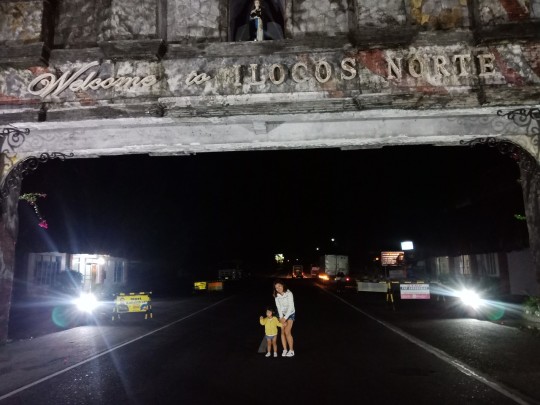

The next time I woke up we were on the kapurpurawan Rock formation in Burgos, Ilocos Norte.

Tucked in the coast of Burgos, Ilocos Norte, just 1.5 kilometers away from Laoag City, is a breathtaking rock formation by the beach known for its creamy white rock surface sculpted by natural phenomena.
The Kapurpurawan Rock Formation is an art of nature featuring a landscape of smooth ivory limestone produced by the natural process of sedimentation. It’s name’s root word, “puraw”, is an Ilocano word which translates to “white” because of the alabaster rock formations that the tourists would love to see.

In front of the rocks is the view of the Bangui Bay’s crystal blue waters and the visually appealing sight of the waves dramatically thumping against the limestone formations makes the scene a picture perfect moment in every way possible.
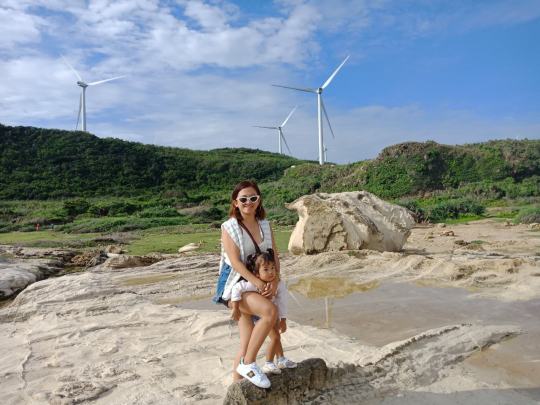
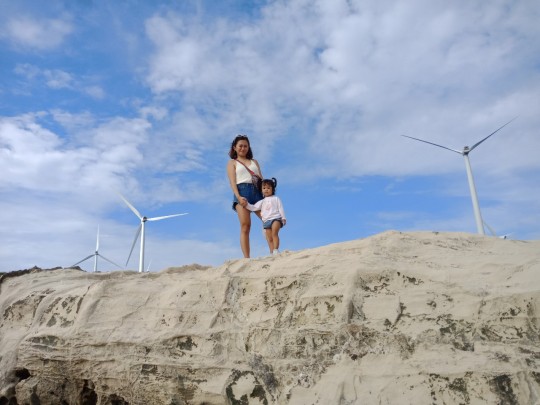
Also, the numerous towering windmills from the neighboring Burgos Wind Farm will you as you drive towards the drop-off point of the rock formation. No wonder that this has become one of Burgos’ best tourist attraction.

Kapurpurawan’s drop-off point is three kilometers away from the main highway. From the entrance, visitors have to go down a flight of stairs near the souvenir shops, then trek towards the rocky coast to reach the rock formation. The path is not too steep but take note that it can be muddy.
While trekking, you will see a statue of the Biag ni Lam-ang, an Ilocano epic poem.
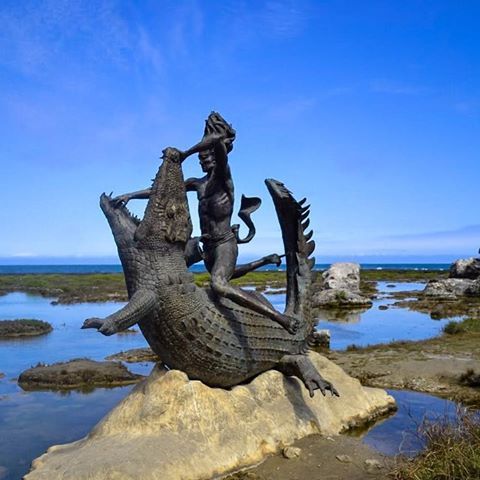
For those who want to don’t want to walk, there are available horses to ride on for just Php 100 per person and Php10 If you only want to take picture.


(SOBRANG SAYA NOH! HABANG UMIIYAK YUNG KILI-KILI HAHAHA!)
It is advised to wear comfortable clothes and footwear or bring a jacket to avoid getting cold, wet, or any possible accidents while trekking. Also take note that flying of drones is not allowed in the area due to the strong winds.
It is best to visit Kapurpurawan on early mornings to avoid the harsh sun or sometimes rain showers in the afternoon, and the crowd. Other nearby attractions in Burgos that one can visit after Kapurpurawan is the Cape Bojeador Lighthouse and Bangui Windmill Farm.
the next stop..
the Bangui Windmills, I’d been longing to see these enormous electric fans since the news broke that there were plans of harnessing wind energy in the Philippines. I had seen windmills before in Pililia Rizal but ofcourse I want to see the windmill here in Ilocos.
On the way to the site, everyone got so excited because we could already see the windmills. Everyone prepared their cameras and flip flops, the girls wore their hair up. When our van finally halted, everyone stormed out of the vehicle as if it were about to explode. It was that crazy.
We didn’t expect these windmills to be that huge. Of course we knew they were big but NOT that big. It was a little difficult to find the right angle from which we could see most of the towers.

We were also expecting 15 of them but I think there were more. We counted it but now that we’re back in the city, nobody remembers how many are there exactly.
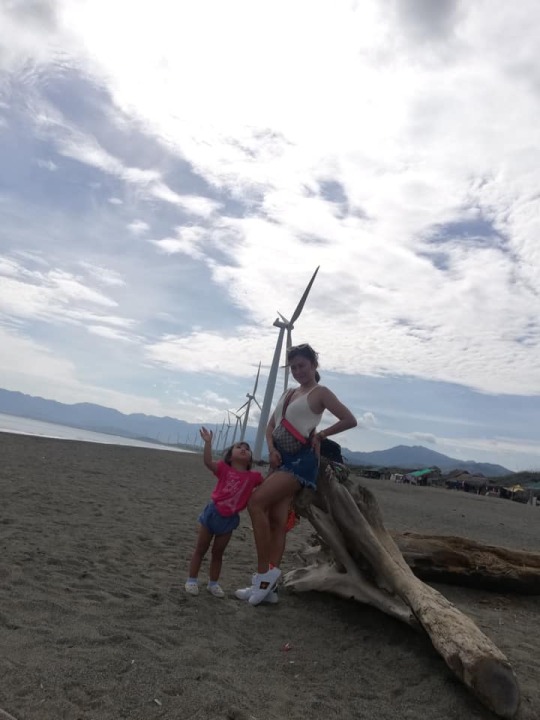
Paraiso ni Anton is one of the few stops of the Pagudpud, a local tourism project of the municipality that aims to bring visitors to Pagudpud’s top-notch destinations. Tourist take photos while locals take a sip of the waters dripping from the hill.

After then, We slowly climbed the concrete stairway after approaching the site. We chanted a little prayer in front of the Virgin Mary statuette. Then We stepped down and proceeded to the watery part of the hill. Silently, We put our palms together and fetched some drips and then sipped.


Some other locals came with containers and filled them with the water flowing from the small stream.
Witnessing all these made me wonder that these waters may uphold some sort of mystery. Then I found out that locals believe that the water that drips down to the hillside of Paraiso ni Anton contain some healing energy. They believe that drinking the water will cure their mild ailments and in some cases, even the severe ones.
There is also another story circulating among frequent travelers in the area. A white lady seemed to appear within the vicinity scaring drivers. So to pay respect, drivers slow down then blow their horns when passing Paraiso ni Anton.
Whether these stories are legend or not, as long as they don’t get harmed, there is nothing wrong about it.
Patapat Viaduct History
Patapat Viaduct is located in Pagudpud, Ilocos Norte. This is considered as the 4th longest bridge in the country with a total of 1.3 kilometers in length that connects the Maharlika Highway from Laoag, Ilocos Norte to the Cagayan Valley Region.
It was completed on October 1986 and has since become an important structure for motorists and travelers in the northernmost tip of Luzon.
The moment we stepped out of the van, we were all pleased with what we saw. I kind’a have an idea of what a viaduct looks like. An elevated bridge usually located on valleys. But Patapat is different. It is a coastal bridge elevated for about 31 meters above sea level. It has a beautiful view of the sea and by finding a good spot, you can have a perfect view of the entire length of the bridge.

Well, more than the value it provides to people. Patapat Viaduct is a perfect spot for any groufie or selfie. Since that time, there was just a little number of motorists that pass through the bridge, we were able to walk and explore it further.

JUMPSHOT WITH THE GANG
Then we finally arrived in our transient house in Pagudpud. We actually arrived at the transient house around 12:30pm but we were sooo tired so we decided to had lunch in carinderia near in our transient. I had heard so many good things about Pagudpud that I just had to see for myself. But even when we were still at the Bangui Windmills, we knew swimming at this time of the year would be quite a challenge .


Blue Lagoon is one of the many isolated beaches of Pagudpud. It is located in Maira-ira point, the northern most tip of mainland Luzon. The cove is strewn with white pebbly sand. the waters off the coast can be very gentle and still, reflecting the blue sky, earning its name.


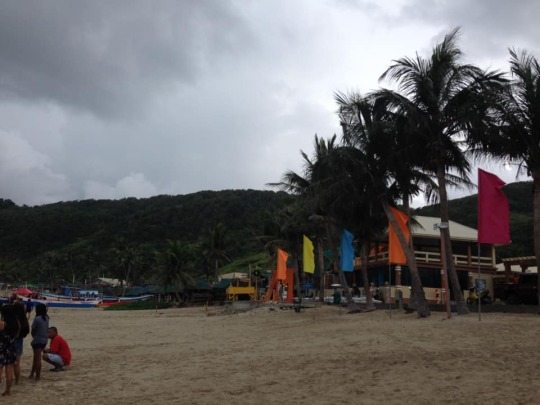

Afterwards, we decided to just walk on the sand and bask in the sun. The sand here was not as fine as those in Bohol or Boracay. They were more like little pebbles but very rounded so they didn’t hurt our skin.
After more than an hour of swimming, we decided to head back to our room and have some snacks and dinner and went to bed for rest.

before the day ends, We finally prepared our Surprise Birthday Party for Mamoy. the other gang took her to coffee shop and the other prepared the decorations.





Day 2 : Our Day started earlier than 6am. With renewed energy, we were more than excited to hit the road again especially that we already had an idea on what was in store for us that day.
The Ilocos Sand Dunes Stretches encompasses the towns of Currimao through to Pasuquin in Ilocos Norte. The La Paz Sand Dunes in Laoag City is one of the more popular sand dune destinations in Ilocos Norte. But more recently, the PAOAY SAND DUNES is remarkably gaining popularity to tourists travelling up north.

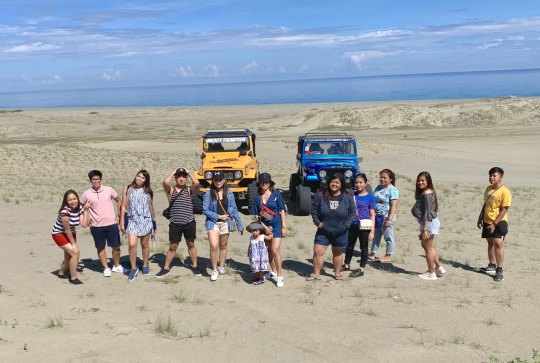
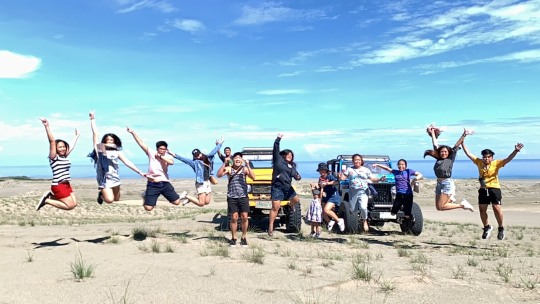
For the adventurous type, We rented the 4x4 for an hour which will then include sand boarding and thrilling drops on steep sand ridges that will make you scream in excitement. Hold on to the steel bar while standing on the 4x4 for the most exciting adventure in Paoay. The sand ridges can go as high as 10-20ft at the most, while the most thrilling ride is the “rollercoaster”, where a series of sand hills will make you hold on to that bar of steel for dear life.

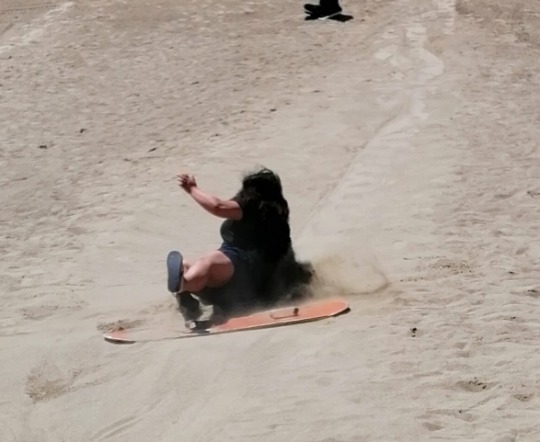
Ps. Sorry Mamoy insert ko tong picture na to, Ito kasi talaga yung nagdala sa tour natin na to hahahahaha Love you.
It was that much fun! The hardest and most tiring aspect of the sport? Going up again the sandy slope after sliding down, but this will not prevent you to try and try until you do it perfectly. This package will cost 2,500php.
Next in our itinerary was the Paoay Church. I must say, I had very high expectations. It was one of the places that I was really looking forward to visiting in this trip. I’d seen hundreds of pictures of this UNESCO World Heritage Site and each one of them blew me away. But boy, none of those pictures did justice to the immense beauty of this ancient religious site!
This church is beyond beautiful. It’s beyond magnificent. Its grandeur cannot be contained in pictures or described with words. It’s just impossible.

The first thing we did was take pictures, of course. It was past 11am and the sun was at its cruelest so we had to find some shade and get some rest even for a minute. Then We had our lunch near the church.
Moments later, we were walking around the church and continued taking pictures. Here are a few of them:
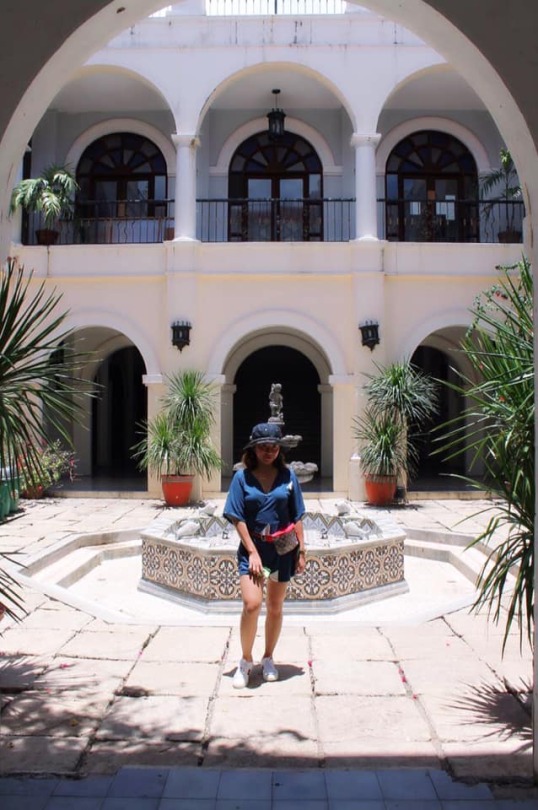



ARCHITECTURE AND HISTORY OF PAOAY CHURCH
Also known as the St. Augustine Church, the Paoay Church was started to be constructed in 1694 by the Augustinian friars but it was only in 1894 when it was finally completed. Fr. Antonio Estavillo led the completion of this project.
The architecture of this church is a healthy mixture of Gothic and Baroque designs with some Oriental elements in it. Its facade is somewhat Gothic but the gables are quite Chinese. The niches topping the walls make you think of Indonesia’s Borobudur Temple, revealing some Javanese influence.
One of the best parts of the church is its three-storey bell tower made of coral stone. Standing a couple of meters from the church, this belfry served as one of the observations posts for the Katipuneros in 1896 in the height of the Philippine Revolt against Spain. During the World War II, it was again used as an observation post by the Filipino guerillas.
Some parts of the church were heavily damaged during the earthquakes in 1885 and 1865. Again and again, it was restored.
In 2000, an excavation inside Paoay Church revealed a prehistoric human skeleton and some fragmented ceramics. They are now being exhibited at the National Museum.
Afterwards, we finally got in Vigan. We explored the city particularly Calle Crisologo, had some halo-halo at the Max’s, bought a tonne of pasalubong and hit the road back to Manila.
Vigan is a UNESCO World Heritage Site and a museum city. Established in the 16th century, this historic city gives the new generation the best glimpse of a planned colonial town during the Spanish rule in the Philippines. It is also one of the few European trading towns in Southeast Asia that are still in exceptional condition.

Calle Crisologo is probably the most visited street in Vigan. Walking down Calle Crisologo is like walking into the Spanish colonial era. Many of the houses here belonged to prominent families who prospered because of the Manila-Acapulco trade. It is flanked with old heritage houses, which keep the “period” charm of the place. Most houses feature a unique mixture of Asian and European design and architecture — red-tiled roofs, large doors, massive walls, capiz shell windows.

We actually had spent some time in this beautiful city on our first day but we had very limited time to see much of it. Because we had to be back in Manila by 5pm, We only had half a day to explore the old city and buy some pasalubong for our friends and relatives back in the capital.
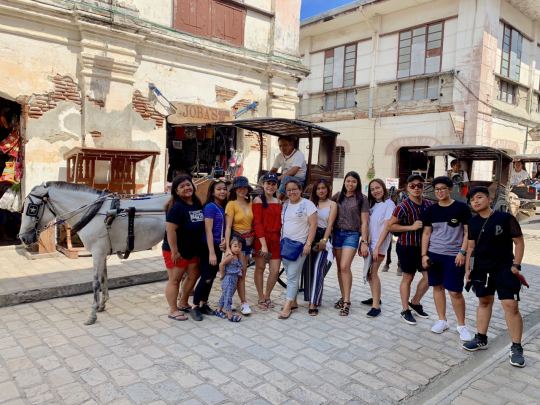

We only had three things in our agenda that morning — camwhore, shop, lunch. We started scouring the area for Vigan longganisa but along the way, we found ourselves buying hats, shirts, and bottles of native vinegar while taking tons of picture.
Before the Spanish arrived, Vigan was just a small village made of bamboo houses on stilts. According to UNESCO: “In 1572 the conquistador Juan de Salcedo founded a new town, which he named Villa Ferdinandina, on this site, and made it his capital when he was appointed Lieutenant Governor (Encomendero) of the entire Ilocos region. Intended as a trading centre rather than a fortress, it was the northernmost city established in the Philippines by the Spanish.
“Vigan’s architecture reflects the coming together of cultural elements from elsewhere in the Philippines, from China and from Europe, resulting in a culture and townscape that have no parallel anywhere in East and Southeast Asia.”



The Old Quirino Bridge will never spoil your urge. Even though you have been in this place a lot of times, a moment in this place is such a precious one to take photos.
Just before the Old Quirino Bridge at Bantay Side, you will pass crossway the new Quirino Bridge. But before going to the Old bridge, we stopped at the new bridge for pictorials.
Just before the Old Bridge again, since it has not been used lately, the forest covering the highway going there has been reborn by nature. Without the intervention of human, the forest is slowly gaining its role in this place. I was so happy!
And finally head back to MANILA..
Ilocos Weekend Trip: Summary, Itinerary and Budget
EXPENSES
Here’s the rough estimate of our expenses:
P2400 — 2-days, 1-night tour inclusive of transportation, accommodation and entrance fees.
P1500 — total food expenses including incidentals (drinks, snacks)
TOTAL: P3900
Note that this does not include pasalubong yet. That’s it. I hope this helps!
Overall, I love Ilocos. I think it’s one of the best and most gorgeous places I have visited EVER. Ilocos is just very easy to fall in love with.
0 notes
Text
How to Buy Suitable Camera Drone for Your Kids?
Drones are really amazing items for kids of all age groups. It is really surprising how a toy can be so useful as well as fun at the same time. it is an amazing flight toy which is really interesting to play and easy to use. It is not really hard to realize which will be best for your kids. You just have to spend a little bit of your time to consider all aspects in order to choose the right one for your kids.
While buying a camera drone for your kids you will find an overwhelming number of options from which to choose. In addition, you will almost e\very size you have expected and also a flexible price range. But, how to know what will be best for your children? Check out the factors which will help to choose a perfect camera drone for your kids.
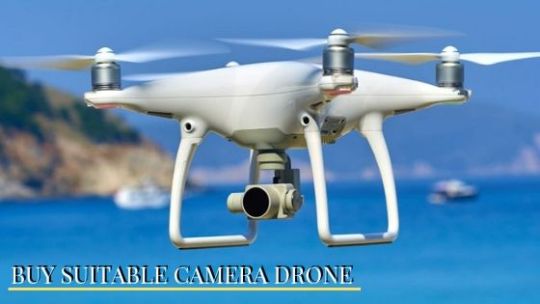
Ease of control- to make it easy for your kids to operate
Flight time- to keep it in the air for the maximum time period
Flight range- to keep the distance and the drone in control of your kids
Durability- for maximum utilization and longest enjoyment for the kids
Camera quality- to provide a better and clear view
If you are thinking about buying a camera drone it will be better to search online. You will be able to all new and advanced camera drones for sales online, which may not be available in the nearby stores. When you will visit the websites of online providers you will get a good collection with pictures, prices, and features to make it simple for you to choose. You can select the best one on the basis of your kids’ ages and the given considerations.
It is better to buy a camera drone from online providers as they offer all items at unbeatable prices. To check the amazing collection of the online providers and the prices, you have to cist their websites.
0 notes
Text
shining like the stars p90
Three large, spectacular explosions detonated one after the other along the aft of the Galran frigate. The cloud of ejected vapor burned brightly, until it consumed all the vented atmosphere from the ship and extinguished. Shiro blew out a breath as he spun the Black Lion away from the much bigger ship, avoiding large bursts of lined turbolaser fire. Black had outrun an entire wing of the Galra drone starfighters that were just now beginning to catch up, but there did seem to be less of them now. Marginally so. His HUD was still lit up like it was Christmas. “Yellow, report,” he said, without taking his eyes off the forward viewscreen.
“I don't know how much longer I can keep doing this,” Hunk's voice was exhausted. Shiro let his gaze flicker to the linked cockpit cameras, and he could see that Hunk was slumped slightly forward, both hands on the flight controls of the Yellow Lion. He looked as worn down as Shiro himself felt, but there was no time for commiseration. Instead of responding to Hunk, Shiro tapped a command on the console and brought Green's cockpit camera online.
“Pidge,” Shiro said. “You clear of the prisoner ship yet?”
“Well,” Pidge's voice came through before the camera connected. “About that….”
“There is absolutely no way that this is going to work,” Allura said, one hand on the back of the pilot's chair. Pidge ignored her, sitting as far forward in the seat as she could and typing out commands one-handed on the floating, holographic command console.
“I can't rewrite the lion's OS to accommodate only using one flight stick,” Pidge said.
“Did you even try?” Matt asked, leaned over her side and staring at the scroll that was the liner code for the flight system. Pidge ignored that, swiping the console clean and restoring it to systems ready.
“Of course I did, and while it may be theoretically possible, it's not something I'm going to be able to code on the fly. Unless you think you can-?” she turned and gave her older brother a look.
“Nuh-uh,” Matt said, and held up his hands. “I still can't tell the squiggles from the scraggles in Altean, don't try to pin this on me.”
“Scraggles go left to right, rising,” Allura said. “If you can't pilot the lion, Pidge, I'll do it.”
Pidge stood. “Please, Princess,” she said, and indicated the seat with her good arm. “Be my guest.”
Matt opened his mouth and closed it, watching Pidge move slightly out of the way so that Allura could seat herself in the pilot's chair. “I thought-” Matt started to say, then closed his mouth and studied his sister thoughtfully. Allura cracked her neck, stretched both of her arms out with her fingers interlinked, and then settled her hands on the flight controls for the Green Lion.
Abruptly, all the view screens in the cockpit went dim.
“Well, that can't be a good sign,” Matt said, as the engines began powering down.
Allura scowled and squeezed the flight controls. “I am Princess Allura, and you will listen to me,” she said, her voice ringing with authority. The Lion rumbled a little around them, like it was about to come back online, and then let out a noise that was reminiscent of a raspberry and went completely offline. Pidge began to snicker, then coughed to cover it up.
“Mystical bond that can never be forced, right, Princess?” Pidge said, and didn't bother to cover up her snicker this time.
Allura's face was stormy, her back held rigid – then she sighed and slumped back, releasing the flight controls. “You've made your point,” she said, and immediately all the view screens pulled up as active, including the portrait window for the other four lions. Only Yellow and Black's were currently active, but there was an exclamation point over Red. Blue was still offline.
“So what are we going to do?” Matt said. “Pidge can't pilot this thing one-handed; it doesn't like you for some reason, and-” Allura tilted her head to Matt and arched an eyebrow. He went pink under his helmet and coughed, looking away. “So what's left?”
“Hey Matt,” Pidge said in a sickly sweet tone of voice, and Matt groaned very loudly.
“No,” he said. “I know that tone of voice and what comes after it, no, absolutely not.” He gestured at Allura. “If it didn't work for the Breath of the Lions, why would it work for me?”
“Because,” Pidge said, her elbow on the back of the chair and her chin in her hand. “You were the candidate for the Green Paladin, right? That means you should have some affinity for her.”
“That's-” Matt said, and shook his head. “That's not quite true, Katie, I-” Whatever Matt had been about to say was cut off by Ilianya's voice through the open comm.
“Green Lion, you need to go, now.”
Matt pressed the console control for the comm as Allura got out of the pilot's chair. “Kestrel Lead this is Kestrel Two,” he said. “We copy that. How's the flight path looking today?”
“Like the burrs in a metosyln's tail, Two,” Ilianya said. “Gonna be a bumpy ride.”
Matt made a face, and Pidge said, “well, that doesn't sound like a good time.” She looked at Allura. “What's a metosyln?”
She looked troubled. “I have no idea. It's not Altean, that's for sure,” she said, as Matt settled into the pilot's chair.
“It's native to New Altea,” he said. “Big ass cat looking thing with a whip-tail covered in poison burrs.” He touched the console and the green holographic display reflected in his helmet before it went fully transparent. He looked over at Pidge, and then took a breath, setting both hands on the flight controls, wincing every so slightly as if he expected them to shock him.
After a long moment, nothing happened – the view screens stayed on and did not dim; and the engines did not power down. Pidge laughed and held tight to the pack of the pilot's seat. “You got this, Matt,” she said.
“Yeah,” Matt said, and pulled back on the flight controls. “I do.”
Keith stood in the launch bay of the Red Lion, his helmet tucked under his arm. He had moved to the ready room on instinct, changing into his Paladin armor numbly, his mind stuck and unable to process much of anything. It was easier this way; focus on the mission. The Lions didn't need a preflight check but he performed one anyway – if he skipped a line item on his mental checklist he would be forced to stop and think and that would derail him entirely.
As he was putting on his helmet Keith heard the fast fall of footsteps behind him. He paused on the ramp into the Red Lion and turned, some subconscious part of him wanting it to be Lance, no matter how impossible that was. It wasn't Lance, of course; Lance was loaded into a healing pod, sleeping off the trauma done by the memory core. It was Rian running after him.
“You can't have Red,” Keith said automatically, as the smaller Altean stopped just shy of the bottom of the loading ramp. He was breathing hard, he had to have run the corridors to get here from the engine room and whatever it was Coran had him doing had left streaks of black and green grime on his arms and shirt.
“There's no way that the Lions alone can defeat a superior-class Galra frigate,” Rian said, doubled over and panting. “You need Voltron.”
They did need Voltron, but that, like the figment of Lance running after him, was an impossibility. “We can't form Voltron without the Blue Lion,” Keith said. “We're just going to have to bring the frigate down without Voltron's help.” Why did Rian even bother coming here to tell him that, he should know that much already.
The realization of where that particular thought led left a pit in Keith's stomach. “Stay away from Blue,” he said, scowling. “Don't you dare touch her, she's Lance's lion.”
“I'm not going to bother the Blue Lion, I couldn't pass any of the Blue Paladin trials,” Rian said heatedly. “I don't have any affinity for water.”
“Then what was the point of this?” Keith said angrily, coming back down a few steps. “Why do you keep bothering me, I know you hate me but that's not going to change anything!”
“Because,” Rian said, having gotten his breathing under control. “You're right, I'm not going to stop hating you, because you're Galra and the last time that a Galra led Voltron it began a war that nearly wiped out my people. But,” he raised his head and stared Keith down. “If we don't work together we won't be able to stop it from happening to other people.”
“What do you mean?” Keith asked.
“I can't touch the Blue Lion,” Rian said. “I have no compatibility with it, but you can. You love the Blue Paladin, the Blue Lion must know that, it will let you past its particle shields-”
Keith laughed in sheer disbelief of Rian's audacity. “And, what, you'll fly Red and we'll go meet up with the others and form Voltron?” He put his hands on the support that held the ramp down and leaned a little more forward, but did not get off the ramp. “Blue wouldn't let me in, not after what I've done to Lance; so even if it was that easy, I'm not letting you fly Red. I'm sure Red wouldn't let you fly her.” He shook his head and pushed off the support, turning to go up the ramp. “I don't have time for this.”
“If you don't form Voltron in this fight, you and your friends will die,” Rian shouted after him.
“Then maybe you'll get your chance to be a Paladin,” Keith said, and slammed the button at the top of the ramp that drew the Red Lion's mouth closed behind him.
The Yellow Lion was sluggish and unresponsive, or maybe that was just his own reactions. Hunk pulled on the flight controls as two full wings of the drone starfighters did a pass on him, their plasma beams lighting up the particle barrier on Yellow. This was the longest sortie he'd ever been a part of, and unlike Lance, Hunk had no interest in being a fighter pilot. Yeah, he could fly, but this … this was more than he'd been trained to deal with.
Suddenly, there was a flash by the distant prison ship. “Is that Pidge?” Hunk asked, excited by the thought that they might be able to get out of here and flee the unwinnable battle before the cavalry arrived.
“Kinda,” Pidge's voice said, and when Hunk glanced to the visual comm it was not what he expected to see. The head and shoulders of the pilot of the Green Lion was dressed in a black flightsuit, with a semi-transparent full helmet. Hunk blinked a few times, then made to rub one hand across his eyes and instead smacked the visor of his helmet.
“Kestrel Two to Kestrel Lead,” Matt's voice came through the comm, and suddenly it all clicked for Hunk. Pidge was hurt but she's okay, Matt is piloting the Green LioWAIT WHAT!? “We're operating at full capacity and don't need an escort, breaking for the castle.”
“I copy,” Ilianya's voice said. The small green arrow on the HUD that represented Ilianya's starfighter broke away from the prison ship. “Rejoining the sortie.” Hunk felt a smile tug despite his exhaustion, and glanced back to his own screen and sensors.
There was a sizable dent in throngs of drone craft now; there were actually clear spots on his head's up display that showed the damage even just two lions and a single piloted starflighter were able to inflict. The frigate itself had taken a decent amount of damage but its main shields were still up. If they could form Voltron, that wouldn't be as much an issue. “Where's Lance and Keith when you need them?” Hunk grunted, mostly to himself.
“Doesn't matter,” Shiro said. “We'll be falling back as soon as the Green Lion is in range of the castle.” The Black Lion hove into his field of vision, distant but visible to the naked eye. “In the meantime let's work over the communications array on the frigate, at least one of those comm dishes is going to be the transmission point for the drones.”
Hunk yawed the Yellow Lion so that he as facing the frigate. He had been targeting the engines specifically earlier, trying to disable the massive ship if nothing else; on a frigate that size there were literally hundreds of arrays of all sizes. Granted, something to command a drone force would be on the larger end of the scale, but commands for something of that nature could be just as easily split among smaller arrays, especially to circumvent the main dish being destroyed. “Roger,” Hunk said, just as a large beam of light shot out from the frigate, targeting again the Black Lion. “Shiro! Look out-!”
His warning was not in time. The blue beam of light was different than the plasma beam from before; it caught the Black Lion broadside and as Hunk yelled out the Black Lion tumbled from the impact. “Shiro!”
The visual comm for the Black Lion had gone to static, and even from this distance Hunk could tell that the Black Lion was offline. However, it didn't appear to be damaged by the hit, tumbling slowly. “Ion canon,” Hunk said, and then realized with the Black Lion disabled so close to the frigate, that meant only one thing. They meant to capture him.
Hunk yanked back on the flight controls. The Yellow Lion wasn't as fast or as maneuverable as the others, it had far more mass but that also meant it had the thickest, strongest hull out of all the Voltron Lions. He could at least slow the Black Lion's aimless tumble, and braced for the impact.
The Black Lion was drifting and he didn't have any towing capabilities, but if they could get Black back online….
“What happened?” Pidge yelled through the comm. “Where's Shiro!?”
There was a flash out of the periphery of Hunk's vision, and then a streak of motion blasted across Hunk's forward viewscreen, coming in fast from port. It was the Red Lion. “Shiro, hang on!” Keith yelled, juking Red through a labyrinth of drone fighters and leaving explosions in his wake.
“Why hasn't the ship picked up the Black Lion in a tractor beam?” Matt's voice now, and as Hunk swung his attention around the Green Lion flew past.
“We got those early on,” Hunk said, as the Green Lion came around on the other side of the Black Lion. “Keith, where's Lance?”
Keith didn't respond, the Red Lion making a beeline for frigate and already so small against its hull that Hunk couldn't pick him out except for the trail of increasingly large explosions. “We have to get the Black Lion restarted,” Hunk said. “Any ideas on how?”
“That depends,” Pidge said. “You wanna get out and push?”
“Restarting the Lion's systems has to be done from inside the Lion,” Allura said. “Shiro will have to do it on his own.”
Hunk didn't want to think about the fact that with the systems down that killed the life support inside the cockpit. “What if he doesn't get it restarted?”
“Then we'll have to tow Black to the castle,” Matt said.
“Hunk, can you keep the drones busy?” Allura said. “We'll keep trying to hail Shiro, with any luck he'll wake the Lion quickly.”
“Yeah, I copy,” Hunk said as he started to turn the Yellow Lion back toward the oncoming wave of drone fighters.
“Kestrel Lead to all channels,” Ilianya's voice suddenly came through the comm, cut up with static. “Requesting backup, I'm hit, three engines out-”
“Ilya, punch out-!” Matt yelled.
Hunk's attention flew to the map, to locate Ilianya's small starfighter. “On my way,” he started to say as Ilianya's next transmission cut to static and the small green arrow on his HUD blinked out.
3 notes
·
View notes
Text
Take a look at the breathtaking beauty of aerial photography.
Aerial pictures may be used to show off beautiful landscapes, buildings, and more. These techniques can help you excel in aerial photography, whether you're using a drone, standing atop a building, or shooting from an airplane.
Aerial photographers shoot photographs from helicopters or small planes in the air. They frequently work for real estate developers and architects, who use aerial photography to assess potential locations and sell their homes. They'll need photography instruction, good spatial abilities, and a thorough understanding of photography equipment, editing processes, and photo-editing software.
Flying a remote drone is a very different experience from being up in the air yourself, camera in hand. There are some advantages, but also a number of drawbacks.
Advantages of aerial photography.
Drones possess a number of advantages. Independence and flexibility are the most important factors. Feel like taking some aerial shots because there's some lovely evening light outside your window? It's no problem; simply grab the drone and take off.
Another factor is cost. The hourly rate for a charter plane might be in the thousands of dollars. A quality quadcopter drone costs about the same as two hours of flight time on a charter helicopter. Of course, if you just want to take some pictures in the city or in the countryside, it is completely free; all you have to do is select a suitable area and configure your drone at the ideal shooting angle.
You also have the option to change the composition on the fly. Do you want to take a shot from five feet off the ground and then another from 100 feet? You can modify it in a matter of seconds.
You also have the opportunity to do things correctly. The composition on a fast-moving airplane might come and go in a matter of seconds. With a drone, you can simply modify the drone's position or camera angle for as long as you want until it's perfect.
As long as your battery lasts, that is.
What makes aerial photography unique in comparison to other forms of photography?!!
Drones can capture what no other technology is normally allowed or capable of recording, just beyond the reach of the longest selfie stick and the lowest-flying helicopter. In a world where 350 million photos are uploaded to Facebook every day, this is especially liberating.
Drone photography is an accessible and cost-effective approach to getting started in the industry. Drone flights also have a far lower environmental impact than other types of aircraft. While some drone technology is approaching that of high-quality cameras, you'll want to avoid drones or find one that can handle your camera if you want higher-resolution aerial shots.
Most people are drawn to it and want to try it because it is so unique.You'll get some fantastic images out of your aerial session if you're as prepared as possible. Just remember to take in the scenery.
0 notes
Text
Guangdong's 6 fire fighting and operation centers equipped with unmanned reconnaissance aircraft
On the 13th, the Jiangmen Public Security Fire Bureau of Guangdong Province disclosed that the regional fire fighting support center of the bureau had been equipped with an unmanned reconnaissance aircraft for the fire detection of large-scale fires in the immediate vicinity of Zhuhai, Zhongshan, and Jiangmen. At present, Guangdong Province has six fire fighting support centers equipped with this type of unmanned reconnaissance aircraft.
It is understood that this type of fire drone was independently developed by the Guangdong Fire Corps. Although its appearance is far from that of a traditional helicopter, a snowflake-shaped shelf made by crossing three metal poles less than one meter long is easier to maintain stability in the air than a traditional helicopter, and it is convenient to pass through the fuselage when flying. Take the camera for observation and shooting. According to Liu Hesheng, an equipment technician of the Second Special Squadron of the Fire Brigade of Pengjiang District, Jiangmen City, the aircraft weighs 5.6 kg, has a remote control distance of 1200 meters, a flight altitude of up to 1,000 meters, and a flight speed of 60 km / h. The longest hover time is For 30 minutes, it can carry 3 kg of goods to fly, and has an automatic return function. The body is equipped with a GPS component and an auto-twistable camera, which can take 12-megapixel still pictures and ultra-high-definition video with a resolution of 4096 × 2160.
The aircraft has been used in a forest fire near the Longguang Tower in Baishui Belt Park in Jiangmen City on the 6th. At that time, an unmanned reconnaissance aircraft monitored the fire situation throughout the whitewater belt forest area from a high altitude. Through the 3G network, the ground image is transmitted back to the screen of the communication command vehicle near the scene in real time. As a result, the fire officers and soldiers accurately studied and judged the fire situation, and it took only two hours to extinguish the mountain fire. According to Li Jian, deputy captain of the squadron, in terms of fire scene reconnaissance, sometimes hundreds of people are not as effective as a reconnaissance aircraft of this kind. Because only by grasping the overall situation of the fire site, the commander at the fire site can timely understand the size of the fire and predict the direction of spread, so as to correctly allocate manpower and material resources to extinguish the fire. Li Jian believes that, in addition to fire fighting, this type of reconnaissance aircraft can also play a large role in other rescue and disaster relief. For example, this type of reconnaissance aircraft can be used to transport lifeline ropes when rescuing people living on high floors. In flood disasters, such reconnaissance aircraft can also be used to search and rescue trapped people.
https://medium.com/@mmcuavrescue
Payloads:http://www.mmcuav.com/payloads/
0 notes
Text
Bats, Blimps, and Giant Camera Chips: 2018’s Top Tech Quick Hits
A dozen intriguing tech projects to look for in the coming year
Photo-Illustration: Gluekit
.multipleCredit .xlrg .hi-cap { margin-top: 0px; padding-top: 0px; } .mobileHide { display: inline;}
/* Smartphone Portrait and Landscape */
@media only screen
and (min-device-width : 320px)
and (max-device-width : 480px){ .mobileHide { display: none;} }
Photo-Illustration: Gluekit
Moonward Ho!
In December 1968, Apollo 8 became the first manned mission to orbit the moon. A half-century on, SpaceX, Elon Musk’s spaceflight company, is vying to do the same thing, offering to send two private customers on a lunar flyby aboard its Dragon 2 capsule. Meanwhile, German startup Part-Time Scientists aims to land the first 4G LTE base station on the moon this year. The base station will relay signals between the company’s yet-to-be-launched rovers and mission control back on Earth, but it could also be used by future lunar explorers. Further-out moon ventures include an inflatable orbiting habitat being developed by Bigelow Aerospace. If all goes according to plan—admittedly, a big “if”—2018 could mark the beginning of the return of humans to the moon. And this time it’ll be for a good long stay. [For more on lunar plans in 2018, see “China Promises the Moon.”]
EU Doubles Down on Data Privacy
On 25 May, the European Union’s General Data Protection Regulation (GDPR) will take effect, with tough rules aimed at protecting the privacy of people living in the EU. Europeans already have many more privacy protections than, say, U.S. citizens, including the “right to be forgotten.” But the GDPR goes much further: It protects virtually every kind of data pertaining to individuals, including medical records, online transactions, and social media posts. It also gives EU residents the right to opt out of automated decision making—via a machine-learning algorithm, for example—and to demand an explanation when an automated decision involves them in some significant way. The GDPR applies to companies doing business in Europe as well as companies that handle the data of Europeans. Unsurprisingly, firms far and wide are scrambling to comply.
Blimp Cell Towers Head Skyward
This year, Altaeros Energies plans to launch the first of its tethered-blimp cell SuperTowers. Each aerostat, floating up to 600 meters above the ground, will provide coverage equal to 30 traditional cell towers. The blimps are intended for remote locations where broadband service is too difficult or costly to supply by conventional means. Several other companies aim to do similar things, including Google, with its Project Loon balloons, and Facebook, with its solar-powered Internet drone, Aquila. Altaeros’s other big push is in high-altitude wind turbines. Who knew you could build a diversified business around lofting tech-laden tethered balloons?
A Home That Floats
Worldwide, hundreds of millions of people live on floodplains, where they’re at risk of losing their homes, if not their lives, to rising water. Such risks could be reduced if their homes could float. That’s the idea behind LifeArk, a prefabricated modular dwelling that is cheap to make, easily transported in shipping containers, and then quickly assembled on-site using standard tools. A project of the architectural firm GDS, the 6-square-meter units can be bolted together into larger structures and connected to the main power grid and sewer system, if available. For off-grid locations, the units come with solar panels, rainwater harvesting and filtration, and waste management systems. The first prototypes will be floated, er, installed on a lake in Lindale, Texas, about 140 kilometers east of Dallas, later this year.
Every Shark Counted
Sharks and rays are threatened worldwide, but even scientists who study them haven’t been able to quantify the extent of the problem. Vulcan Inc., in Seattle, a philanthropic entity of Microsoft cofounder Paul Allen, aims to fill in the missing data. Its three-year Global FinPrint project is counting sharks, rays, and other marine life around coral reefs, using remote underwater video stations as well as a video-processing AI that helps identify animals caught on camera. The survey of 400 reefs is scheduled to wrap up this year. Already, the data has been used by Belize to create a ray sanctuary, and it’s informing the Dominican Republic’s efforts to protect sharks. The project has also generated intriguing clips of eels, sea turtles, and sea snakes—which admittedly don’t have quite the viral pull of cat videos.
150 Megapixels in Your Camera
Sony continues its domination of digital camera sensors with the release this year of the IMX411, a CMOS sensor chip capable of an “absurd” (as one blogger put it) 150 megapixels. The chip will also shoot ultrahigh-definition 8K video at 30 frames per second. Two other sensors, the IMX461 and IMX211, will offer 100-megapixel resolution. All three chips are intended for medium-format digital cameras—Sony’s as well as other companies’—and for applications like large-area surveillance, digital archiving, and industrial inspection. If you’re thinking you really need such a camera, better stock up on storage, too: Each 150-megapixel image will translate into a 300-megabyte file.
Linking Up Chile’s Long, Skinny Grid
From north to south, Chile extends 4,300 kilometers, but at its widest point, it’s just 350 km. This elongated profile poses a challenge for the country’s grid manager, Coordinador Eléctrico Nacional (CNE). Until recently the Chilean grid consisted of four separate electricity networks, so there was no way to move, say, solar energy generated in the northern desert to the country’s populated middle. Last year, though, construction wrapped up on the 580-km Mejillones-Cardones interconnection, finally linking up the northern and central grids. Later this year, a new 750-km transmission line will better connect points within the central network, and CNE plans to fund another US $600 million in transmission projects, including a 500-kilovolt line for the south. A robust transmission network could allow Chile to tap into ocean and tidal energy—with 4,300 km of coastline, it’d be a shame not to.
A Subway Fit for a Queen
Late this year, the first major section of London’s £14.8 billion Crossrail train network is set to open. When the new rail service fully opens in December 2019, it will add 42 kilometers of tunnels to the capital’s transit system, along with 10 new stations and upgrades to an additional 30 stations. The 10-year effort—the biggest construction project in Europe—promises to relieve congestion and shorten travel times for up to 200 million passengers a year. Although the Elizabeth Line is named for England’s longest-reigning monarch, the queen strikes us as an unlikely commuter.
Error-Detecting Voting Tech
The two big concerns about electronic voting are that a system error will cause votes to be inadvertently miscounted or that a hacker will cause votes to be intentionally miscounted. Starting this year, the state of Colorado plans to roll out a technique that proponents say will guarantee the correct outcome: risk-limiting audits. This statistical approach, which the state successfully rolled out in the November 2017 election, relies on comparing a random sample of paper ballots with the corresponding digital votes. The closer the election result, the more ballots get audited. If the audit finds an error in the reported outcome, a full hand count will be done. But if the audit finds the reported outcome to have a high likelihood of being correct, no hand recount is needed. The company developing the software for Colorado, Free & Fair, is open-sourcing it so that other states can adopt it.
Frankenstein Turns 200
This year marks the 200th anniversary of the publication of Frankenstein. Although Mary Shelley began writing her gothic novel on a dare to devise a good ghost story, she also wove in elements of the latest scientific theories of the day, including Galvani’s studies of “animal electricity” and contemporary debates over human consciousness. Thus did Shelley spark a pop culture meme that today is as popular in Hollywood as it is revered in academia. Universities around the world will host Frankenfests throughout the year to celebrate the book, its creator, and her ideas.
Waiting for Stratolaunch
Announced in late 2011, Paul Allen’s humongous rocket-launching aircraft was supposed to take its first test flight in 2016, which got pushed to 2017 and then 2018. Most recently, Allen’s company said it would conduct engine tests at NASA Stennis Space Center in the second half of this year. Next year could finally see the Stratolaunch’s maiden voyage. The idea of the 117-meter-wide, six-engine plane is still appealing: Taking off from a commercial runway, it will ascend to about 9,100 meters carrying one or more rockets, for a total payload weight of 230,000 kilograms. (That’s an order of magnitude greater than the payload of Orbital ATK’s Stargazer.) From that altitude, a rocket is clear of more than half of the planet’s atmosphere and thus far easier to propel to low Earth orbit. The project’s long timeline only goes to show that reducing the cost and complexity of rocket launch is still about as hard as rocket science itself.
Good News for Bats
When bats meet wind turbines, it’s invariably the bats that lose. According to one study, U.S. wind power killed more than 600,000 bats in 2012. Since then, the world’s wind-generating capacity has doubled. Curtailing wind turbines during periods of peak bat activity does reduce fatalities, but it also cuts into an operator’s revenues. This year, NRG Systems, based in Hinesburg, Vt., will release a commercial version of its ultrasonic bat-deterrent system, which requires no curtailment. The equipment sits on the turbine’s nacelle and emits ultrasonic sound between 20 and 50 kilohertz—the same frequencies North American bats use for echolocation. A bat nearing the turbine will immediately change direction, thereby avoiding its date with destiny.
All photo-illustrations: Gluekit
Bats, Blimps, and Giant Camera Chips: 2018’s Top Tech Quick Hits syndicated from http://ift.tt/2Bq2FuP
0 notes
Link
There are some ways you’ll sell DJI’s Mavic Mini to someone. It’s an incredibly small drone. It’s a good drone for film and photography. It’s easy to find out and fun to fly. It’s relatively inexpensive for the features you get. As someone who does video and photography on a daily basis for work, I saw this as an ideal starter drone.
#technology#new tech gadgets#best drone camera#best drones#dronefly#cheapdrone#djidrone#drone-with-good camera drone-with-longest-flight-time
0 notes
Text
Best 9 Tips For Drones Under 200
Drones have the energy to help you make far more of each and every adventure you consider. Just traveling a drone is an adventure in and of by itself! Are you a rookie to the drone world? If so, acquiring a drone match for a rookie is all you want to get started out, so you won't need to spend more than 200 dollars. Fundamental drone types give you flight with out concern of breaking a very costly piece of equipment. Our evaluation experts have seemed by way of dozens of drones, and these 10 stand out as the ideal drones underneath 200 dollars for beginners. To make your choice easier, examine out our buyer's guide for a far better comprehension of what drone characteristics there are to take into account. one. Pressure one U45W Blue Jay - Greatest FPV Drone The initial drone we might like to introduce is the Pressure one U45W Blue Jay. This drone has a good deal of wonderful features for a newbie design, this kind of as high-top quality FPV abilities. The main attract of this drone is the wonderful FPV configurations. The initial-individual-check out syncs with both your smartphone or a VR headset, and you can view the world from the drone cockpit following syncing. This FPV is effortless to simplicity, and it truly is intuitive for smartphone end users. Blue Jay has a developed-in High definition camera. It can seize 720p photos and films with a 2MP digicam. It truly is even possible to do 360° views with this digicam, which is excellent for VR consumers. Photographs can be saved straight to your synced mobile phone movies save to the memory card. The Blue Jay is extremely novice welcoming because of the simple, personalized controls. It's possible to vehicle-hover right after takeoff and land gently with just one particular button press. You can also attract a custom made route on your smartphone, and your drone will fly the route alone. Like numerous drones in this value assortment, the batteries leave significantly to be wanted. Even though you need to get 8 minutes of flight time when the drone is new, these batteries may possibly use out after a handful of employs and will need to have to be changed. The Blue Jay arrives with two batteries and an further electrical power pack. If you want a substantial-top quality FPV drone, this is the proper selection. Even as a newbie, hooking this drone up to your mobile phone is straightforward so that you can get a cockpit expertise. Fly around and see every little thing as it transpires with the Power 1 U45W Blue Jay drone. 2. Holy Stone F181- Very best Beginner Controls & Sturdiness The following drone to verify out is the Holy Stone F181, typically just acknowledged as the F181. This drone with a constructed-in camera has a number of controls that make it effortless to control, even if this is your initial time traveling a drone. Even if you wreck it, it must preserve flying. The controls that this drone will come with are really effortless for beginners to use. You can fly the drone in four distinct modes - from twenty five% to a hundred% - to fit every single degree. Headless mode also aids newcomers preserve their drone underneath manage. F181 is really resilient it can stand up to a variety of bumps and crashes. This is best for the rookie and intermediate drone pilot who are even now studying to do methods and fly. The kit also will come with extra propellers. The battery fees in about 80 minutes, and the F181 will come common with two batteries, which is great for when you will not likely want to quit traveling right after just 8 minutes of flight time. The transmitter has its very own set of batteries which you will also need to have to change as essential. 1 likely disadvantage of this drone is the digicam good quality. Even though you can capture video clips and photos, the high quality just isn't sufficient for semi-skilled aerial movie. Still, the digital camera is quite straightforward to use and great for beginners. When searching for a drone that will stand up to you studying how to fly it, attempt the F181 by Holy Stone. This is a holy grail product among beginner drone consumers because of how easy it is to learn to fly. The controls will help train you how to fly, and it truly is a hard drone to break. three. DBPOWER MJX 400W- Wonderful Drone For Recreational Entertaining The DBPOWER MJX X400W drone is also identified as The Hawkeye-VII. It is one particular of the greatest drones beneath a hundred. You can get wonderful 360-degree views with this beginner quadcopter. What helps make this drone excellent for the new, leisure drone pilot is its durability. You are going to crash when you very first learn to manage your drone, and this drone can consider that harm well. There are even spare rotors integrated so you can replace anything that will get bent. An additional great factor of this leisure drone is that it has a very good selection. The drone will fly without concern at up to 100m in open up regions, and you can anticipate up to 50 to 60m in busier locations. If you are utilizing the FPV or flying at evening, the transmission length will be reduced. The handbook offers a fantastic clarification of how to use this drone. Reading through it will teach you how to sync the drone with the controller, how to use the controls, and how to sync the controller to your cellphone or headset. All of this is effortless to do with the in depth recommendations DBPOWER. One unfavorable of this leisure drone is the digital camera top quality. Capturing visuals at only .3MP, you can't expect substantial-top quality photographs. Nonetheless, you can get pleasure from seeing what your drone sees despite it not currently being the greatest amid drones with digital camera choices. Straightforward-to-handle and effortless-to-fly, this drone is wonderful for those who want to attempt out the hobby of drone flying with out spending a whole lot of money. For recreational functions, this drone has everything you require. four. DBPOWER UDI U842- Best Novice Drone If you are a beginner or intermediate pilot hunting to function on your drone manage abilities, the DBPOWER UDI U842 is the right drone for you. The Next 10 Things To Immediately Do About Drones Under 200 exceeds many other of the very best drones under 200 for its traveling handle, intuitive layout, and general overall performance. The understanding curve on this drone is really limited. Once you electrical power it up and overview the controls, you may be in a position to pilot it in no time. Even though you might crash at first, your number of crashes will reduce swiftly. There are diverse modes for newbies and more sophisticated learners to fly in. One more excellent function for newcomers is how rugged this drone is. You might be going to crash it from time to time, and this drone can just take a beating. It is fairly massive but even now light-weight, so it doesn't drop apart when you have to enable it drop. The U842 has LED night lights on the nose. This assists you to appreciate flying at night time and nonetheless be in a position to orient which course you are flying in. In addition, the lights seem awesome! A single large disadvantage of the U842 drone is how lengthy it takes the batteries to cost. Most drone batteries consider in between 70 and a hundred minutes, but this battery takes one hundred fifty minutes to demand. Still, backup batteries are accessible, and you get all around nine minutes of flight time for each and every battery. The greatest novice drone is, without having a question, the UDI U842 by DBPOWER. The controls on this drone are effortless to understand and will help you find out how to function a drone. Utilizing this design is enjoyable and useful for end users of all encounter ranges. 5. UDI U818A- Very best Value Bundle Deal UDI tends to make a fantastic drone recognized as the U818A. Even though the controls on this drone are well worth mentioning, the very best thing is all the include-ons. This model comes as a excellent price bundle, creating it one of the very best drones below one hundred. The bundle comes with all the power you need: two batteries, an exterior energy lender and a two battery charger. Furthermore, you get 4 further drone blades, a 4GB SD card, and an SD card reader. All of these insert-ons are essential for the new drone pilot. This model has great maneuverability many thanks to the 6-axis gyro feature. The gyro provides extra security and wind resistance although also creating the drone easier to control. Headless mode also will help to make directing the drone very basic. An additional reason this is this kind of a fantastic price drone is due to the fact it is resilient. Even if you operate it into trees or expose it to aspects these kinds of as snow, it will keep operating. It is wonderful for the hobbyist who wants to understand to fly without worrying about ruining their drone. The wind can be a massive situation with this design due to the fact it is so light. If the wind is more powerful than five MPH, cross winds may have this design out of assortment, and you will drop control. A single excellent way to fix possible wind problems is to always reset the gyro ahead of traveling. Getting the UDI U818A drone is a wonderful value buy. For a tiny price, you get a tough drone with a good deal of extra components and batteries. Almost everything the hobbyist requirements is integrated with this established. 6. MJX Mugs3 - Very best Flying Time The MJX Bugs 3 Quadcopter is a brushless drone produced by RCtown. This model has the longest flying time of any other drone on our ideal drones record these days at over fifteen minutes. The exciting will by no means finish with this drone! The genuine draw of this drone is it really is lengthy flight time. With out a digital camera hooked up, this drone can fly for 18 to 20 minutes. With a digicam, it will fly for among thirteen and 16 minutes. On leading of that, the drone comes with a backup battery. An additional good element of this drone is the extended selection it has. At peak functionality, the drone can fly up to 500m. You can reach these distances when in open regions. The transmitter has a characteristic to indicate when the drone is nearly out of selection so you can pull it back again. The MJX Bugs three has an wonderful brushless motor. This helps prevent excessive friction within the areas, helping the motor very last longer. Considering that you could be mounting an expensive digicam on this drone, the reliability from the brushless motor is quite crucial. On damaging of this particular drone is that there is no incorporated camera. Instead than a camera, this drone sports a digital camera holder. This is great and bad. You can select what digital camera quality you want and attach it to the drone, such as Gopro, but that will be at your personal further cost. If you happen to be looking for a drone that can fly significantly and for a extended time, this is the right option. Many beginner drones can't fly for far more than 8 minutes. This drone virtually doubles equally flight time and assortment from other sub-two hundred versions. seven. Holy Stone HS200 - Greatest Funds Drone In conditions of budget, the Holy Stone HS200 FPV drone is leading among the best drones under two hundred. This drone does not value a lot, but it nonetheless has a lot of attributes that every single recreational drone pilot will want to attempt out. Several drones at this reduced of a price stage do not have FPV, 1st particular person see, capabilities. This drone does. All you do is sync your telephone or VR goggles to the drone, and you can expertise the cockpit check out. This characteristic is extremely effortless to use and helps make piloting more enjoyable. The HS200 comes outfitted with further features that are great for rookie and intermediate pilots. A single button take-off is possible with this drone. Simply thrust the button, and it will hover at 3 ft above the floor, awaiting much more instructions. Toughness is not an situation with the HS200. This drone can stand up to several crashes, and it even will come for a handful of further props just in case. Since the drone is mild, higher drops do not trigger weighty damage. Your exciting won't stop with a damaged drone. This drone package does not occur with any further batteries, so you will have to acquire your own. Purchasing at minimum 3 extra batteries and a high-high quality charger will be adequate to make confident you can increase your drone fun. The HS200 is a drone that can be crashed time and time yet again, and it will nevertheless work. The FPV can make it a very entertaining drone to pilot. Every single rookie on a funds will have a blast with this drone. eight. What Can The Music Industry Teach You About Drones Under 200 - Best Digicam Drone A slight upgrade from the HS200, the HS300 is an additional wonderful drone from Holy Stone. This drone functions the nicest digital camera that you can get from the best drones below 200. The genuine attract of this drone is the amazing camera able of creating great aerial footage.The 5MP camera can record 1080p movies at 30fps. The digital camera also functions a one hundred twenty-degree extensive angle lens for the very best panoramic shots. This drone has a respectable flight time at eight to 12 minutes, and the drone comes with a backup battery so you do not require to buy one particular. Based on local interference, this implies that you can fly for between 20 and 30 minutes with no needing to recharge something. The HS300 is more substantial and heavier than other drones underneath 200. 4 Awesome Tips About Drones Under 200 From Unlikely Sources assists the drone compete with stronger winds and stand up to hurt. Some of that fat is in the propeller guards and landing gear, which support the sturdiness. In spite of its wonderful digital camera, this drone does not offer you FPV (initial man or woman view). You cannot see what your drone is looking at, which can make filming difficult. It is, however, achievable to swap the digicam out for one particular with WiFi abilities to repair this concern if you need FPV. If you are on a limited funds and want to create great aerial shots, this is the drone for you. The extraordinary digicam and dependable efficiency are all the newbie drone photographer needs to get began. nine. Kidcia- Best Transportable Drone Another model not however talked about, Kidcia, helps make a novice quadcopter with FPV live digicam options that is foldable, and thus, really transportable. This product is straightforward to deliver along with you on any excursion. The Kidcia has a nice, lightweight design with foldable arms. You can make it extremely compact by folding in the propeller, and then this is simple to carry alongside on any vacation. You don't even want the primary controller the drone can be managed from your mobile phone on its own. One more great feature you are going to only locate with the Kidcia is the Gravity Sensor attribute. This attribute syncs the drone to move in the exact same way that your phone moves. Merely go your cellphone in the sought after path, and the drone will adhere to along. The battery existence on this drone is much better than many other people at this cost stage, though it nonetheless isn't the quantity a single selection. You can fly the drone for ten in addition minutes without having problem. With an extra battery or two, you may be capable to fly to your heart's content material. A single large damaging on this product is the camera quality. At only .5MPs, the high quality of any video and images captured will not be quite excellent. Nonetheless, the camera can be utilised for FPV viewing by way of the application on a phone, which is a good contact. The Kidcia quadcopter has foldable arms, producing it the most moveable drone at this cost point. Use it to discover the planet and discover how to fly, anywhere you go. Drones Buyer's Guidebook The ideal drones under two hundred can offer you the newbie and intermediate drone pilot a exclusive expertise. These drones are less difficult to fly than less costly or far more expensive drones since of their simplified but sturdy attributes. Furthermore, they have enough sturdiness to let you find out how to fly, even if you crash a number of instances. Nevertheless, choosing a single solution out of several can be difficult. So, our buyer's guidebook will split down the main attributes observed amid the ideal drones. Envisioned Features Of Drones In This Value Selection Most drones that value less than two hundred will be geared up with the adhering to functions: Just take High definition Images & Films Initial Person See: You can see the drone's level of view from a controller. Acrobatics: The drones can do flips and rolls. Not fast ample to race. Digital camera & Digicam Top quality 1 explanation that a lot of newcomers and intermediates use drones is to seize impressive photographs or movies. When deciding on among drones with camera features, you should check out out the digicam specs. The 1st thing to notice is that not all drones have constructed-in cameras. Some only have the room for a camera, and you have to incorporate one particular by yourself. This can be an additional expense in conditions of the two time and money. Most newbies will want to go with a drone that has a developed-in digital camera. Most created-in cameras have minimal picture and online video top quality. Constantly check out the specs of the digicam on the drones you are searching at. You will want to check the megapixel rating of the digital camera and also what video settings it can record in. The ideal drones will have a gimbal to stabilize any photographs or video taken even though the drone is traveling. Flight Time Flight time of the most costly drones can last for more than twenty five or thirty minutes, but sub-200 drones will never be ready to fly for that lengthy. You can anticipate average batteries in these drones to final for in between 7 and 12 minutes of flight time. Acquire backup batteries and have them all entirely charged. When original flight time is up, modify to the subsequent established to play with your drone for a longer time without having needing to recharge anything at all. Range Another crucial function to think about is the range that the drone can include. Selection is how significantly the drone can fly from the controller. Whilst models at the top end of this value position numerous be in a position to fly up to 500 meters, most will leading out about one hundred meters. How numerous meters do you want to include with your drone? Determine this, and then narrow your selections. What Are So-Called FPV Drones? Some drones are known as FPV Drones. This implies that you have FPV, or initial individual look at, even though controlling them. FPV drones might show you FPV on the controller, or you might be capable to experience this look at by way of an app. Both way, you get the genuine cockpit experience along with your drone. If you get a non-FPV drone, you will not likely have a 1st individual view. You will not be capable to see what the drone is seeing in genuine time given that there is no screen. Individual choice dictates whether or not or not you should search for an FPV drone. Nevertheless, a lot of rookie and intermediate drone pilots uncover FPV to be the most interesting element of flying. Conclusion All of these drones operate if you might be seeking for the best bang for your buck as a newbie. You will not want a lot more than a fundamental drone when you are first having flight, and all of these drones will give you hrs of enjoyable with no investing way too significantly money.
0 notes
Text
How to Make a Drone / UAV – Lesson 8: Airplanes
How to Make a Drone / UAV – Lesson 1: Terminology How to Make a Drone / UAV – Lesson 2: The Frame How to Make a Drone / UAV – Lesson 3: Propulsion How to Make a Drone / UAV – Lesson 4: Flight Controller How to Make a Drone / UAV – Lesson 5: Assembly How to Make a Drone / UAV – Lesson 6: Get it all working together How to Make a Drone / UAV – Lesson 7: FPV & Long-range How to Make a Drone / UAV – Lesson 8: Aircraft
The use of small unmanned aircraft for FPV and autonomous mapping is becoming increasingly popular, especially given the surge in popularity of multirotors for FPV and the increasing availability of parts. This article covers several considerations when deciding if an airplane is suitable for your drone application, and if so, helping you to select the right type.
Quad vs Delta Wing
Multirotor vs Airplane
What advantages might an airplane offer over a multirotor? While a multirotor is great for fun / FPV / autonomous flying, the payload and flight times are still restricted because the propellers must be constantly turning (thus expending energy) to fight the pull of gravity and keep it airborne. Airplanes on the other hand use their wings to generate lift. So which type is best? Not considering common gear like the transmitter, receiver, FPV equipment, flight controller, the points below seem most applicable:
Multirotors
Able to take off and land vertically as well as hover in place
Do not require much area in which to fly and are essentially “omnidirectional”, able to change their orientation and speed very quickly
The thrust generated by the propellers is what keeps the craft in the air
Less intuitive to fly given the craft can change orientation and fly in almost any direction, and gimbals can easily cause disorientation
“Medium sized” multi-rotors of 400 to 600mm diameter are most common and tend to cost $200-$1000+ for a (custom) flight-ready setup.
Although multirotors have significantly fewer moving parts than helicopters, almost any failure on a quadcopter will lead to a crash
Airplane
Launched by hand, runway or catapult, and generally lands on relatively flat grass or a runway
Requires a large open space in which to fly since the airplane’s maneuverability is limited (i.e. needs to always be moving forward)
Wings / airfoils create the lift
Higher potential payload capacity
Foam models can be forgiving in the event of a crash, and most can be repaired
Models with a 500mm to 1.8m wing span are most common for hobby use and a complete setup tends to cost $200 to $1000+.
In case of an engine failure, there is still the potential to land without damaging the aircraft.
VTOL
Designs incorporate wings and propellers (not many commercial products available at this time)
Control is still fairly complex to transition from vertical to horizontal flight
Designs vary wildly from quadcopters with wings, or using / extending a quadcopter’s support arms to include wing profiles
Will not be discussed further in this article
Considerations
Location: A UAV / drone cannot and should not be flow in densely populated areas, above buildings or anywhere that could cause harm or damage to property. Airplanes ideally require large open areas whereas multirotors can be operated in more confined spaces. If you do not have an open space in which to fly, then a small multirotor may be best.
Use: If you want aerial observation / FPV, a multirotor is likely best. Mapping and long-range flights are better with an airplane.
Interest: If you are interested in one type of drone moreso than another, that should be one of the most important factors in your decision
Budget: The most common multirotor (500mm range) will likely be more a bit expensive than a comparable airplane (~1.5m wing span), but not by much. How ready are you to lose the drone, either due to a crash, or loss of control, causing it to fly away?
Flight Time: An average medium sized quadcopter will remain in the air for around 10-15 minutes (though certain manufacturers are able to push this to 30~40 min), while an average, medium-sized electric airplane will provide around 20-60+ minutes under “normal” use (i.e. not full throttle), though there are many different factors to consider in both cases.
Flight Controller: Not all flight controllers are able to control all types of airplanes. Before choosing one, ensure that the type of plane you are interested in is supported by the flight controller (should you intended to use one). How to configure the flight controller will not be covered in this article.
Common UAV / Drone Wing Types
There are many different air frames used to make drones, but we have found that certain designs are much more widely used than others. As more and more manufacturers start producing custom made air frames for autonomous use, gone are the unnecessary details like cockpits for scale model designs which were commonly found on RC airplanes in the past.
Delta Wing
By far the simplest (and potentially the most popular) design is a flying / delta wing. A simple / rudimentary frame can be made using inexpensive foam board and a basic Kline-Fogleman airfoil. These classically have only two control surfaces, meaning all turns are banked. The propeller is commonly found at the rear (to allow a camera to be mounted at the front), but flies just as well with the motor placed in the center or at the front, provided the center of gravity is correct. These are great for their simplicity and tend to need to fly at higher speeds.
Motorized Sailplane / Glider
If you want to remain in the air as long as possible (i.e. longest flight time), this design is the best choice. These tend to have a mid-wing or high wing design, and the tail is T or V-shaped. All of the frames here can be used for fun flight (or more), however if you want it to last a long time in the air, you need to consider an aircraft which has a large wing, and this is where gliders excel. These are not meant to be the fastest (and are often the slowest) nor carry the greatest payload (they need to be as lightweight as possible), but a good design can stay in the air for many hours. Almost all have the propeller mounted at the front, so applications which require a camera normally need to have it mounted on the underside / belly of the fuselage.
“Skywalker”
The design here is a pusher where the propeller is mounted just behind the wings, and the tail support is mounted just below so as not to interfere. The wing is generally tapered or straight. An alternative design uses two supports (one on either side of the propeller, i.e. “twin boom”) to support the tail. The design is a compromise between a sail plane which has large wings, and a normal aircraft for the fuselage size. The fact that the propeller is at the rear means the front can be equipped with a camera (unobstructed view). Having the propeller mounted quite high makes it easy to hand launch, and the propeller should never touch the ground in a normal landing (with or without landing gear). These designs tend to be good for payload capacity, decent speed and decent flight time, and offer the greatest versatility.
Conventional
Normal RC planes are still often converted for use as drones, and designs range from Mustangs (sport) to Piper Cubs (trainer). Almost all have the propeller mounted at the front (puller). The wings have a generally straight leading / trailing edge (rectangular), though for fighter plane replicas, the wing may be more tapered. These designs are most often used because they are the most common RC airplane and are easily available. Unfortunately, these aircraft are not purpose built and include aesthetic elements which are unnecessary for drone applications. These are also not the easiest designs to work with when choosing an unobstructed mounting location for a camera and many of the designs use wood which is not forgiving at all in a crash.
Non-Standard
There are some non-standard designs available, of which the “Drak” is one (almost an inverted delta). This particular design has the wings in an almost forward swept configuration, and the propeller at the rear. Advantages and disadvantages vary by model, though their unique appearance often gets quite a bit of attention.
Size
So how large should your airplane be? The criteria which is most often used, even before the application, is how will you be transporting it? Airplanes are (almost) always larger than multi-rotors, and since the area where you plan to fly may not be close to your home or business, most often transportation will need to be done by car. Because of this, air frame size for drones tends to be limited for 2m (wing span), and in most cases, the wings need to be removable from the fuselage for transport. A flying wing however may not have the option for removable wings, so they tend to have wing spans of less than around 1.2m to be able to easily fit in the back seat of a car. Classically, a standard sized RC aircraft would have a ~0.5m to 2m wing span, so the availability of parts for this size (motor, ESC, battery, servos etc) is incredibly good.
The second question you might ask yourself would be how long you would like the airplane to remain airborne. If you plan to remotely control the airplane, note that after around 20-30 minutes, most people become physically / mentally tired and tend to want to land. Staying airborne for extended flights means you would be considering a glider with at least a 2m wing span (but not too much payload capacity).
A third consideration is of course is the potential application. A “drone” would not be a normal RC airplane, but rather have robotic elements to it. Common applications include FPV flight, mapping, as well as fully autonomous flight using sensors. For autonomous flight, you need a flight controller with GPS, as well as potentially adding sensors. We have found a mid-sized drone with around 1m to 2m wing span allows for the most flexibility, and you don’t need to worry too much about every gram.
Kit Types
Designing a custom airplane is rarely a priority for someone looking to get in the air for FPV or autonomous flight since it tends to either require significant research or proper knowledge of aerodynamics (not covered at all here). For this reason, frames designed specifically for FPV / drone applications are becoming more and more popular. However, given the widespread popularity of normal RC aircraft, many enthusiasts still turn to existing RC models (not necessarily scale models) and adapt them for FPV / autonomous use.
RTF “Ready to Fly“; The product includes everything you need to get in the air, and normally includes a fully assembled frame (likely broken down slightly for more compact shipping) with everything already installed (motor, ESC, servos, flaps etc.), as well as the transmitter & receiver, battery and charger. Normally you connect the wing(s) to the fuselage, charge, insert & connect the battery and you’re good to go. This is the fastest way to get into the air but are rarely upgradeable. BNF “Bind and Fly“; the UAV comes almost fully assembled (likely broken down for more compact shipping) and the main items not included are the receiver / transmitter. Assembly is very fast given that all parts are already mounted / assembled. You need to connect your receiver to the servos and motor, mount the battery and check the CG, then go through a basic startup checklist / calibration. Note that you will likely need to configure your radio for the model. This is the second fastest way to get in the air. PNF “Plug and Fly“; The airplane is essentially fully assembled (likely broken down for more compact shipping) and includes the motor, ESC, propellers and servos, but does not include the transmitter, receiver, battery or charger. You need to connect your receiver to the servos and motor, select and mount the battery (verifying the CG), then go through a basic startup checklist / calibration. Note that you will likely need to configure your radio for the model. PNP “Plug and Play”; is the same as PNF. ARF “Almost Ready to Fly“: products normally include the frame and some hardware and come partially assembled with almost all frame parts / components necessary to build the frame. Some gluing may be needed. You need to select your own transmitter, receiver , motor, ESC, propeller servos as they are not included. KIT These days, kit airplanes include build plans, but take the most time before the airplane is flight worthy. We suggest having some experience flying before trying a kit plane, as one crash (normally on the maiden flight) can mean many hours to rebuild it. DIY “Do It Yourself“ (scratch built), which, when talking about airplanes, normally means an entirely custom frame which the pilot may have designed. Normally the designer needs to select all the appropriate components and some trial and error is often needed.
Construction
There are many different materials used to create the frame, wings and tails of RC / drone airplanes.Although manned aircraft often use fiberglass, aluminum and even carbon fiber, drone manufacturers have not yet adopted these for smaller unmanned planes. Below are the more common materials you will find in the industry:
EPO “Expanded PolyOlefin”; This type of foam is light, stiff and tougher than EPS and can be molded to be quite smooth. In a crash, the foam will compress and if there is enough force, will break along in the weakest area(s). Parts normally remain whole and if the crash is not too severe, the parts can be glued back together. EPP “Expanded PolyPropylene”; This type of foam is flexible and rubbery and although it is a bit heavier than EPO is almost indestructible (for practical purposes). EPS “Expanded PolyStyrene”; This type of foam is normally used for packaging which you might find for televisions, electrical appliances. helmets, inside ice boxes and for road and home construction. EPS contains ~95-98% air. Balsa Wood In the past, most RC aircraft used balsa, which is an incredibly lightweight but decently rigid and easily cut wood, to build the frames, wings and tail. Incredible care and time had to be invested during the construction, and even the lightest of impacts caused major damage to the frame (more significant crashes result in a complete loss). Blow Mold
Plastic
The process of blow molding plastic involves a closed mold into which semi-molten plastic is blown and then cooled in order to retain the mold’s shape. This results in a durable hollow shell. Blow molded plastic is most often used to create the fuselage (as opposed to the wings) and the customer is expected to make the appropriate cutouts. Blow molded designs / kits can also include pre-cut balsa as reinforcement. Blow molded plastic can withstand low force impacts and tends to dent as opposed to shatter. Vacuumed
Plastic
The process of vacuum forming sheets involves heating a thin plastic sheet to the point it is flexible but not quite molten, and placing it onto a male mold; while it is flexible, air between the mold and the sheet is removed (i.e. vacuumed out), causing the sheet to conform to the shape of the mold. The plastic is left to cool and the 3D shape is cut out from the surrounding material. There are many different types of plastics which can be vacuum formed and properties can vary. Polycarbonate tends to be a good compromise between weight and impact resistance. Corrugated Plastic Although very few airplanes use this for the fuselage or wings, it is used quite often to create rigidity, doors or wherever flat surfaces are needed. Corrugated plastic looks like corrugated cardboard, but is made out of plastic (think about a “For Sale” sign). It is very resistant to crashes and impacts, easy to work with without any special tools and is very smooth (aerodynamics).
So which material to choose for an airplane? The vast majority of the FPV community uses EPO foam:
Exponentially less time invested in assembly as compared to balsa and therefore faster to get into the air.
Relatively lightweight compared to other materials and decently rigid*, yet can be easily modified / cut.
“Forgiving”, in that it is able to withstand low force crashes and impacts and can often be re-glued and re-flown.
Good value; Foam models range quite a lot in price since the creator needs to offset the cost of the design, prototypes and mold and the cost of the frame is normally proportional to its size.
Does not require specialized tools like a heated laminating iron
Most frame kits include the major components needed (balsa models often required the additional purchase of laminating film, much of the hardware and more).
*Foam models are rarely rigid enough on their own to withstand the loads on the wings and require reinforcement in the form of “spars” (long and thin rods, normally made of fiberglass or carbon fiber) to increase the rigidity. These spars often need to be glued in place in various strategic places on both the top and bottom of the wing (in pre-cut channels). Foam models can only be so large before this approach is no longer practical, which is why it’s fairly rare to see models with more than a 2m wing span using foam.
Assembly
Foam: It is important to note that one cannot use any glue on foam and certain glues will eat away at and degrade the foam. The most common glues used to bond EPO foam are Goop (name brand) and Gorilla Glue (name brand). Goop is clear and has thes consistency of a thick sirop, and the bond is excellent. Gorilla glue on the other hand requires a bit of water for activation and its initial consistency is that of thick sirop. It then foams up to about 400% its initial size and is yellow in color. Gorilla glue can be cut away in areas where it is unwanted, but be sure to impede areas you don’t want it to leak into (using painter’s tape for example) and use hot glue to tack parts in place which you don’t want to move while the glue expands and hardens. It is normally easy to cut away foam using a sharp retractable knife, soldering gun (as opposed to soldering iron) or heated wire. A hand saw tends to rip apart the foam and leave a very rough surface.
Foam airplanes are often white, rarely black and even more rarely grey or other colors. Customizing the appearance is a matter of adding color or designs which can be done using specific paint, laminate or vinyl. Note that only certain paints are suggested for use with foam, as some can trigger a reaction and melt the foam.
Balsa: Cyanoacrylates are most commonly used for balsa wood – they are normally a very viscous liquid (almost like water) and create a very strong bond. Once the frame has been made, it needs to be covered using laminate (a plastic sheet with a heat activated glue on one side) in order to create the aerodynamic surface. Laminating film is heated / applied using a laminating iron and one of the properties is to become “tight” so the surface becomes hard. This means that the laminate will only be able to adhere to the balsa wood – it cannot be used to create 3D shapes.
Composites: It is still rare to see composites used to create small sized aircraft (carbon fiber). These parts use epoxy (or a specific bonding agent) and are harder to cut manually, often requiring a CNC milling machine. Creating 3D shapes is also quite hard. Normally airplanes use composites for reinforcement.
Power
An aircraft propulsion system consists of the motor, propeller, ESC and battery. Choosing the appropriate parts for a frame should not be “guesswork” and it’s best to see if the manufacturer of the frame has either a specific suggestion of motor + propeller, or a range for a given payload. Most enthusiasts these days tend towards electric motors as opposed to gas (kerosene for example) because of the lowest cost of operation and ease of use. Solar is rarely used since the power which solar energy provides versus the added weight of the solar panels (which are used to charge the batteries) is still not advantageous.
Choose a motor + propeller combination which can provide the thrust needed for your airframe which has a specific load. Some manufacturers of airframes provide some ideas of the thrust needed based on their own experimentation, which should give a general idea of the thrust range needed. Under-powering the plane would cause it to be unstable, “porpoise” or crash. An overpowered plane might be entirely unstable in flight. Given that almost all of the technology used to create airplane drones comes from the RC industry, there is ample amount of information available regarding choosing the right thrust and servos for different applications.
Center of mass: The center of mass is the point around which the frame can be placed so there is equal weight on all sides. Center of lift / moment coefficient This is the point where the sum total of all lift generated by the wings and control surfaces and is usually located at the highest point of the airfoil. You normally want the center of mass to correspond with the center of lift.
Launching / Landing
There are classically three ways to launch a small drone: a runway, by hand or “catapult”. If you have access to a flat field, unused and open paved surface or runway (at an RC model club), then your airplane will need wheels and proper landing gear. Delta wings, gliders, and non-standard drone frames almost never have landing gear, and as such need to be hand launched or use a catapult.
Runway Launch / Land: In order to use a runway approach, your drone needs wheels, and the runway should be as flat as possible and ideally paved.
Hand Launch: There are two main types of hand launches: under hand swing, or over head. The swing approach is similar to a discus launch (or skipping stones across water) where you try to get the drone up to speed as fast as possible using angular velocity. Alternatively there is the overhead approach (best to have a second person doing this) where you launch the plane upwards
Catapult Launch: A catapult uses one of a variety of different methods to get the drone up to speed as fast as possible: bungee cable, winch or even compressed air. Catapults are not easy to transport, and require additional investment and troubleshooting.
Hand Catch: It’s not too hard to catch a small drone by hand, provided the propeller is not rotating, but takes some practice and skill
Skid Landing: The most commonly used landing method is a skid landing on a decently flat surface such as grass. This method is used because fewer and fewer drones have landing gear (and a runway is not available), forcing the airplane to simply land in any flat area possible. Normally before a flight, the pilot will find a suitable place to do a skid landing. The aircraft should ideally have replaceable skid plates due to wear and tear.
Net “Landing”: Although more commonly used by the military for small drones, using a net to catch a drone is quite effective where other types of landing or retrieval are impeded. Setting up a net system however takes time, and for most enthusiasts, other types of landing or retrieval are preferable.
Are you looking to design or build a drone based on an wing? We would love to se what you create and encourage you to join letsmakerobots.com and post your project. Is there any information you would have liked here but did not find? Feel free to provide your comments and feedback below.
Related Stories
UPS Testing Air Drone Delivery
Intel’s Superbowl Drone Coordination
Amazon Made History – First Prime Air Drone Delivery
from RobotShop Blog Feed http://ift.tt/2nLW89D via IFTTT
0 notes
Text
How to Make a Drone / UAV – Lesson 8: Airplanes
How to Make a Drone / UAV – Lesson 1: Terminology How to Make a Drone / UAV – Lesson 2: The Frame How to Make a Drone / UAV – Lesson 3: Propulsion How to Make a Drone / UAV – Lesson 4: Flight Controller How to Make a Drone / UAV – Lesson 5: Assembly How to Make a Drone / UAV – Lesson 6: Get it all working together How to Make a Drone / UAV – Lesson 7: FPV & Long-range How to Make a Drone / UAV – Lesson 8: Aircraft
The use of small unmanned aircraft for FPV and autonomous mapping is becoming increasingly popular, especially given the surge in popularity of multirotors for FPV and the increasing availability of parts. This article covers several considerations when deciding if an airplane is suitable for your drone application, and if so, helping you to select the right type.
Quad vs Delta Wing
Multirotor vs Airplane
What advantages might an airplane offer over a multirotor? While a multirotor is great for fun / FPV / autonomous flying, the payload and flight times are still restricted because the propellers must be constantly turning (thus expending energy) to fight the pull of gravity and keep it airborne. Airplanes on the other hand use their wings to generate lift. So which type is best? Not considering common gear like the transmitter, receiver, FPV equipment, flight controller, the points below seem most applicable:
Multirotors
Able to take off and land vertically as well as hover in place
Do not require much area in which to fly and are essentially “omnidirectional”, able to change their orientation and speed very quickly
The thrust generated by the propellers is what keeps the craft in the air
Less intuitive to fly given the craft can change orientation and fly in almost any direction, and gimbals can easily cause disorientation
“Medium sized” multi-rotors of 400 to 600mm diameter are most common and tend to cost $200-$1000+ for a (custom) flight-ready setup.
Although multirotors have significantly fewer moving parts than helicopters, almost any failure on a quadcopter will lead to a crash
Airplane
Launched by hand, runway or catapult, and generally lands on relatively flat grass or a runway
Requires a large open space in which to fly since the airplane’s maneuverability is limited (i.e. needs to always be moving forward)
Wings / airfoils create the lift
Higher potential payload capacity
Foam models can be forgiving in the event of a crash, and most can be repaired
Models with a 500mm to 1.8m wing span are most common for hobby use and a complete setup tends to cost $200 to $1000+.
In case of an engine failure, there is still the potential to land without damaging the aircraft.
VTOL
Designs incorporate wings and propellers (not many commercial products available at this time)
Control is still fairly complex to transition from vertical to horizontal flight
Designs vary wildly from quadcopters with wings, or using / extending a quadcopter’s support arms to include wing profiles
Will not be discussed further in this article
Considerations
Location: A UAV / drone cannot and should not be flow in densely populated areas, above buildings or anywhere that could cause harm or damage to property. Airplanes ideally require large open areas whereas multirotors can be operated in more confined spaces. If you do not have an open space in which to fly, then a small multirotor may be best.
Use: If you want aerial observation / FPV, a multirotor is likely best. Mapping and long-range flights are better with an airplane.
Interest: If you are interested in one type of drone moreso than another, that should be one of the most important factors in your decision
Budget: The most common multirotor (500mm range) will likely be more a bit expensive than a comparable airplane (~1.5m wing span), but not by much. How ready are you to lose the drone, either due to a crash, or loss of control, causing it to fly away?
Flight Time: An average medium sized quadcopter will remain in the air for around 10-15 minutes (though certain manufacturers are able to push this to 30~40 min), while an average, medium-sized electric airplane will provide around 20-60+ minutes under “normal” use (i.e. not full throttle), though there are many different factors to consider in both cases.
Flight Controller: Not all flight controllers are able to control all types of airplanes. Before choosing one, ensure that the type of plane you are interested in is supported by the flight controller (should you intended to use one). How to configure the flight controller will not be covered in this article.
Common UAV / Drone Wing Types
There are many different air frames used to make drones, but we have found that certain designs are much more widely used than others. As more and more manufacturers start producing custom made air frames for autonomous use, gone are the unnecessary details like cockpits for scale model designs which were commonly found on RC airplanes in the past.
Delta Wing
By far the simplest (and potentially the most popular) design is a flying / delta wing. A simple / rudimentary frame can be made using inexpensive foam board and a basic Kline-Fogleman airfoil. These classically have only two control surfaces, meaning all turns are banked. The propeller is commonly found at the rear (to allow a camera to be mounted at the front), but flies just as well with the motor placed in the center or at the front, provided the center of gravity is correct. These are great for their simplicity and tend to need to fly at higher speeds.
Motorized Sailplane / Glider
If you want to remain in the air as long as possible (i.e. longest flight time), this design is the best choice. These tend to have a mid-wing or high wing design, and the tail is T or V-shaped. All of the frames here can be used for fun flight (or more), however if you want it to last a long time in the air, you need to consider an aircraft which has a large wing, and this is where gliders excel. These are not meant to be the fastest (and are often the slowest) nor carry the greatest payload (they need to be as lightweight as possible), but a good design can stay in the air for many hours. Almost all have the propeller mounted at the front, so applications which require a camera normally need to have it mounted on the underside / belly of the fuselage.
“Skywalker”
The design here is a pusher where the propeller is mounted just behind the wings, and the tail support is mounted just below so as not to interfere. The wing is generally tapered or straight. An alternative design uses two supports (one on either side of the propeller, i.e. “twin boom”) to support the tail. The design is a compromise between a sail plane which has large wings, and a normal aircraft for the fuselage size. The fact that the propeller is at the rear means the front can be equipped with a camera (unobstructed view). Having the propeller mounted quite high makes it easy to hand launch, and the propeller should never touch the ground in a normal landing (with or without landing gear). These designs tend to be good for payload capacity, decent speed and decent flight time, and offer the greatest versatility.
Conventional
Normal RC planes are still often converted for use as drones, and designs range from Mustangs (sport) to Piper Cubs (trainer). Almost all have the propeller mounted at the front (puller). The wings have a generally straight leading / trailing edge (rectangular), though for fighter plane replicas, the wing may be more tapered. These designs are most often used because they are the most common RC airplane and are easily available. Unfortunately, these aircraft are not purpose built and include aesthetic elements which are unnecessary for drone applications. These are also not the easiest designs to work with when choosing an unobstructed mounting location for a camera and many of the designs use wood which is not forgiving at all in a crash.
Non-Standard
There are some non-standard designs available, of which the “Drak” is one (almost an inverted delta). This particular design has the wings in an almost forward swept configuration, and the propeller at the rear. Advantages and disadvantages vary by model, though their unique appearance often gets quite a bit of attention.
Size
So how large should your airplane be? The criteria which is most often used, even before the application, is how will you be transporting it? Airplanes are (almost) always larger than multi-rotors, and since the area where you plan to fly may not be close to your home or business, most often transportation will need to be done by car. Because of this, air frame size for drones tends to be limited for 2m (wing span), and in most cases, the wings need to be removable from the fuselage for transport. A flying wing however may not have the option for removable wings, so they tend to have wing spans of less than around 1.2m to be able to easily fit in the back seat of a car. Classically, a standard sized RC aircraft would have a ~0.5m to 2m wing span, so the availability of parts for this size (motor, ESC, battery, servos etc) is incredibly good.
The second question you might ask yourself would be how long you would like the airplane to remain airborne. If you plan to remotely control the airplane, note that after around 20-30 minutes, most people become physically / mentally tired and tend to want to land. Staying airborne for extended flights means you would be considering a glider with at least a 2m wing span (but not too much payload capacity).
A third consideration is of course is the potential application. A “drone” would not be a normal RC airplane, but rather have robotic elements to it. Common applications include FPV flight, mapping, as well as fully autonomous flight using sensors. For autonomous flight, you need a flight controller with GPS, as well as potentially adding sensors. We have found a mid-sized drone with around 1m to 2m wing span allows for the most flexibility, and you don’t need to worry too much about every gram.
Kit Types
Designing a custom airplane is rarely a priority for someone looking to get in the air for FPV or autonomous flight since it tends to either require significant research or proper knowledge of aerodynamics (not covered at all here). For this reason, frames designed specifically for FPV / drone applications are becoming more and more popular. However, given the widespread popularity of normal RC aircraft, many enthusiasts still turn to existing RC models (not necessarily scale models) and adapt them for FPV / autonomous use.
RTF “Ready to Fly“; The product includes everything you need to get in the air, and normally includes a fully assembled frame (likely broken down slightly for more compact shipping) with everything already installed (motor, ESC, servos, flaps etc.), as well as the transmitter & receiver, battery and charger. Normally you connect the wing(s) to the fuselage, charge, insert & connect the battery and you’re good to go. This is the fastest way to get into the air but are rarely upgradeable. BNF “Bind and Fly“; the UAV comes almost fully assembled (likely broken down for more compact shipping) and the main items not included are the receiver / transmitter. Assembly is very fast given that all parts are already mounted / assembled. You need to connect your receiver to the servos and motor, mount the battery and check the CG, then go through a basic startup checklist / calibration. Note that you will likely need to configure your radio for the model. This is the second fastest way to get in the air. PNF “Plug and Fly“; The airplane is essentially fully assembled (likely broken down for more compact shipping) and includes the motor, ESC, propellers and servos, but does not include the transmitter, receiver, battery or charger. You need to connect your receiver to the servos and motor, select and mount the battery (verifying the CG), then go through a basic startup checklist / calibration. Note that you will likely need to configure your radio for the model. PNP “Plug and Play”; is the same as PNF. ARF “Almost Ready to Fly“: products normally include the frame and some hardware and come partially assembled with almost all frame parts / components necessary to build the frame. Some gluing may be needed. You need to select your own transmitter, receiver , motor, ESC, propeller servos as they are not included. KIT These days, kit airplanes include build plans, but take the most time before the airplane is flight worthy. We suggest having some experience flying before trying a kit plane, as one crash (normally on the maiden flight) can mean many hours to rebuild it. DIY “Do It Yourself“ (scratch built), which, when talking about airplanes, normally means an entirely custom frame which the pilot may have designed. Normally the designer needs to select all the appropriate components and some trial and error is often needed.
Construction
There are many different materials used to create the frame, wings and tails of RC / drone airplanes.Although manned aircraft often use fiberglass, aluminum and even carbon fiber, drone manufacturers have not yet adopted these for smaller unmanned planes. Below are the more common materials you will find in the industry:
EPO “Expanded PolyOlefin”; This type of foam is light, stiff and tougher than EPS and can be molded to be quite smooth. In a crash, the foam will compress and if there is enough force, will break along in the weakest area(s). Parts normally remain whole and if the crash is not too severe, the parts can be glued back together. EPP “Expanded PolyPropylene”; This type of foam is flexible and rubbery and although it is a bit heavier than EPO is almost indestructible (for practical purposes). EPS “Expanded PolyStyrene”; This type of foam is normally used for packaging which you might find for televisions, electrical appliances. helmets, inside ice boxes and for road and home construction. EPS contains ~95-98% air. Balsa Wood In the past, most RC aircraft used balsa, which is an incredibly lightweight but decently rigid and easily cut wood, to build the frames, wings and tail. Incredible care and time had to be invested during the construction, and even the lightest of impacts caused major damage to the frame (more significant crashes result in a complete loss). Blow Mold
Plastic
The process of blow molding plastic involves a closed mold into which semi-molten plastic is blown and then cooled in order to retain the mold’s shape. This results in a durable hollow shell. Blow molded plastic is most often used to create the fuselage (as opposed to the wings) and the customer is expected to make the appropriate cutouts. Blow molded designs / kits can also include pre-cut balsa as reinforcement. Blow molded plastic can withstand low force impacts and tends to dent as opposed to shatter. Vacuumed
Plastic
The process of vacuum forming sheets involves heating a thin plastic sheet to the point it is flexible but not quite molten, and placing it onto a male mold; while it is flexible, air between the mold and the sheet is removed (i.e. vacuumed out), causing the sheet to conform to the shape of the mold. The plastic is left to cool and the 3D shape is cut out from the surrounding material. There are many different types of plastics which can be vacuum formed and properties can vary. Polycarbonate tends to be a good compromise between weight and impact resistance. Corrugated Plastic Although very few airplanes use this for the fuselage or wings, it is used quite often to create rigidity, doors or wherever flat surfaces are needed. Corrugated plastic looks like corrugated cardboard, but is made out of plastic (think about a “For Sale” sign). It is very resistant to crashes and impacts, easy to work with without any special tools and is very smooth (aerodynamics).
So which material to choose for an airplane? The vast majority of the FPV community uses EPO foam:
Exponentially less time invested in assembly as compared to balsa and therefore faster to get into the air.
Relatively lightweight compared to other materials and decently rigid*, yet can be easily modified / cut.
“Forgiving”, in that it is able to withstand low force crashes and impacts and can often be re-glued and re-flown.
Good value; Foam models range quite a lot in price since the creator needs to offset the cost of the design, prototypes and mold and the cost of the frame is normally proportional to its size.
Does not require specialized tools like a heated laminating iron
Most frame kits include the major components needed (balsa models often required the additional purchase of laminating film, much of the hardware and more).
*Foam models are rarely rigid enough on their own to withstand the loads on the wings and require reinforcement in the form of “spars” (long and thin rods, normally made of fiberglass or carbon fiber) to increase the rigidity. These spars often need to be glued in place in various strategic places on both the top and bottom of the wing (in pre-cut channels). Foam models can only be so large before this approach is no longer practical, which is why it’s fairly rare to see models with more than a 2m wing span using foam.
Assembly
Foam: It is important to note that one cannot use any glue on foam and certain glues will eat away at and degrade the foam. The most common glues used to bond EPO foam are Goop (name brand) and Gorilla Glue (name brand). Goop is clear and has thes consistency of a thick sirop, and the bond is excellent. Gorilla glue on the other hand requires a bit of water for activation and its initial consistency is that of thick sirop. It then foams up to about 400% its initial size and is yellow in color. Gorilla glue can be cut away in areas where it is unwanted, but be sure to impede areas you don’t want it to leak into (using painter’s tape for example) and use hot glue to tack parts in place which you don’t want to move while the glue expands and hardens. It is normally easy to cut away foam using a sharp retractable knife, soldering gun (as opposed to soldering iron) or heated wire. A hand saw tends to rip apart the foam and leave a very rough surface.
Foam airplanes are often white, rarely black and even more rarely grey or other colors. Customizing the appearance is a matter of adding color or designs which can be done using specific paint, laminate or vinyl. Note that only certain paints are suggested for use with foam, as some can trigger a reaction and melt the foam.
Balsa: Cyanoacrylates are most commonly used for balsa wood – they are normally a very viscous liquid (almost like water) and create a very strong bond. Once the frame has been made, it needs to be covered using laminate (a plastic sheet with a heat activated glue on one side) in order to create the aerodynamic surface. Laminating film is heated / applied using a laminating iron and one of the properties is to become “tight” so the surface becomes hard. This means that the laminate will only be able to adhere to the balsa wood – it cannot be used to create 3D shapes.
Composites: It is still rare to see composites used to create small sized aircraft (carbon fiber). These parts use epoxy (or a specific bonding agent) and are harder to cut manually, often requiring a CNC milling machine. Creating 3D shapes is also quite hard. Normally airplanes use composites for reinforcement.
Power
An aircraft propulsion system consists of the motor, propeller, ESC and battery. Choosing the appropriate parts for a frame should not be “guesswork” and it’s best to see if the manufacturer of the frame has either a specific suggestion of motor + propeller, or a range for a given payload. Most enthusiasts these days tend towards electric motors as opposed to gas (kerosene for example) because of the lowest cost of operation and ease of use. Solar is rarely used since the power which solar energy provides versus the added weight of the solar panels (which are used to charge the batteries) is still not advantageous.
Choose a motor + propeller combination which can provide the thrust needed for your airframe which has a specific load. Some manufacturers of airframes provide some ideas of the thrust needed based on their own experimentation, which should give a general idea of the thrust range needed. Under-powering the plane would cause it to be unstable, “porpoise” or crash. An overpowered plane might be entirely unstable in flight. Given that almost all of the technology used to create airplane drones comes from the RC industry, there is ample amount of information available regarding choosing the right thrust and servos for different applications.
Center of mass: The center of mass is the point around which the frame can be placed so there is equal weight on all sides. Center of lift / moment coefficient This is the point where the sum total of all lift generated by the wings and control surfaces and is usually located at the highest point of the airfoil. You normally want the center of mass to correspond with the center of lift.
Launching / Landing
There are classically three ways to launch a small drone: a runway, by hand or “catapult”. If you have access to a flat field, unused and open paved surface or runway (at an RC model club), then your airplane will need wheels and proper landing gear. Delta wings, gliders, and non-standard drone frames almost never have landing gear, and as such need to be hand launched or use a catapult.
Runway Launch / Land: In order to use a runway approach, your drone needs wheels, and the runway should be as flat as possible and ideally paved.
Hand Launch: There are two main types of hand launches: under hand swing, or over head. The swing approach is similar to a discus launch (or skipping stones across water) where you try to get the drone up to speed as fast as possible using angular velocity. Alternatively there is the overhead approach (best to have a second person doing this) where you launch the plane upwards
Catapult Launch: A catapult uses one of a variety of different methods to get the drone up to speed as fast as possible: bungee cable, winch or even compressed air. Catapults are not easy to transport, and require additional investment and troubleshooting.
Hand Catch: It’s not too hard to catch a small drone by hand, provided the propeller is not rotating, but takes some practice and skill
Skid Landing: The most commonly used landing method is a skid landing on a decently flat surface such as grass. This method is used because fewer and fewer drones have landing gear (and a runway is not available), forcing the airplane to simply land in any flat area possible. Normally before a flight, the pilot will find a suitable place to do a skid landing. The aircraft should ideally have replaceable skid plates due to wear and tear.
Net “Landing”: Although more commonly used by the military for small drones, using a net to catch a drone is quite effective where other types of landing or retrieval are impeded. Setting up a net system however takes time, and for most enthusiasts, other types of landing or retrieval are preferable.
Are you looking to design or build a drone based on an wing? We would love to se what you create and encourage you to join letsmakerobots.com and post your project. Is there any information you would have liked here but did not find? Feel free to provide your comments and feedback below.
Related Stories
UPS Testing Air Drone Delivery
Intel’s Superbowl Drone Coordination
Amazon Made History – First Prime Air Drone Delivery
from RobotShop Blog Feed http://ift.tt/2nLW89D via IFTTT
0 notes
Text
Island City Review
The assignment was the longest and most difficult. I needed to create lots of content and also learn different editing techniques as well as software.
It started with researching different styles and getting ideas together to find a suitable theme. My first ideas consisted of asking the question, what has Portsmouth got to work with which isn’t very well known. I wanted to have a theme which would be of interest to many. The first photos I got were the drone sunset photos. I then thought maybe doing all aerial photos of Portsmouth to show a different angle. But there were many limitations with this due to restrictions of places you can fly in Portsmouth. Therefore I decided to look for hidden colours as I knew and been referred of a few locations which were great for colour.
Once I had my theme set I then made a start looking into the locations and thinking of the style of how I would create the images. I researched Island City stories. A few examples gave me inspiration on style and what was required. I also took into consideration that my story could be made into a video format. Next time I would of made more research into the style and design of the magazine as I believe with more knowledge I could of planned my shoots better.
After my research I shot all my photos over 4 different shoots throughout the year. I had over 500+ images and had to choose which ones were most relevant to the story. After choosing each photo I then used Lightroom to edit all my photos to correct the brightness and also boost the clarity and vibrance to make the colours stand out.
Designing the magazine was one of the biggest parts of this project and took lots of time to finalise my choice of design. I used Photoshop to create the overall design. I started with a basic idea and tried to expand on it. After a while I decided I didn’t like the design so completely changed the design . With the second design I gained inspiration from a few examples that were on Moodle. If I did this project again I would research more magazine’s and also try to learn Indesign. I gave it a short go this time round but felt more efficient in Photoshop so stuck to that.
Overall Limitations:
Throughout this project there were many pitfalls and failures. Firstly was distinguishing the theme/story. Starting with photos from the sky I had many locations I could get images from. But I couldn’t fly in these areas and they were flight restricted zones. This meant that my idea of Portsmouth from the sky was completely shattered and I had to start again. Well not completely. This is because I still used a few aerial photos. After establishing the new story I had to go to different locations and some limitations occurred at Eastney Fort. Firstly was health and safety. The buildings were run down and not particularly safe. The staircases were difficult to get up. But I the end the desired shots were taken. Trial and error was a big part of this assignment and it was a risk that I had to take. I wanted to find hidden colours and literally wandered to places that I didn’t expect to find such good locations. This was a risk which paid off and gave me access to create good content for my story.
Successes:
Trial and error was also a massive success for me in this project. After exploring different places the beauty was discovered and really related to the story. This was also a big part of the story for how the images were taken. The development of the magazine design was also a huge success. Originally I had a very basic design and wasn’t happy with my work. But after researching more designs and learning a few different styles it really benefited my work. Improving knowledge of camera settings and also improving creative outlook. Over the last 9 months I have learnt how to adjust the camera settings in full manual mode to create the desired shot. I have also improved my creative ideas so I can get a range of shots for my work. This included better handling of my DSLR and quadcopter.
0 notes
Link
he best beginner drone with camera and GPS ($359.99) is the company’s latest attempt at making an entry-level drone. It’s not it’s first, the Phantom series had the low price Standard model, which frequently sold for $500 or less, and DJI tried again with the tiny Spark, which was hampered by limited flight time.
0 notes